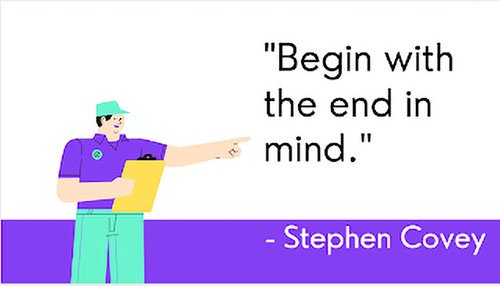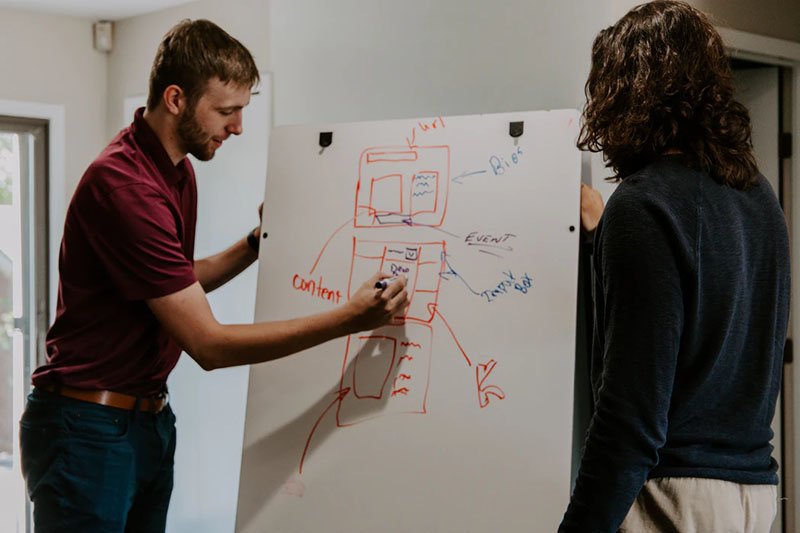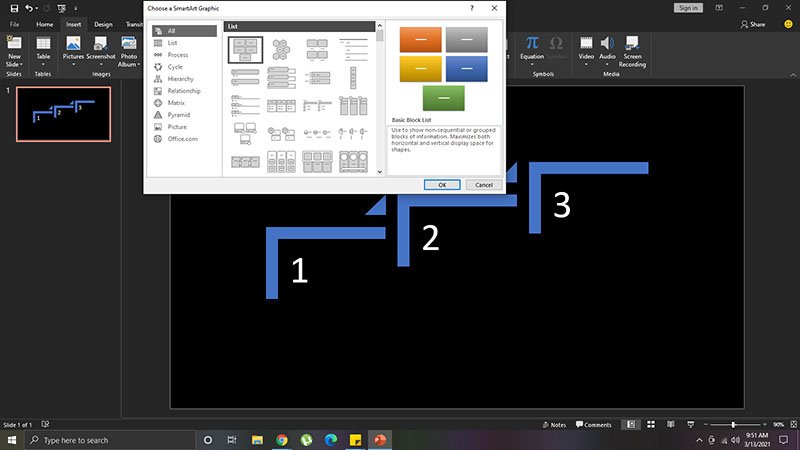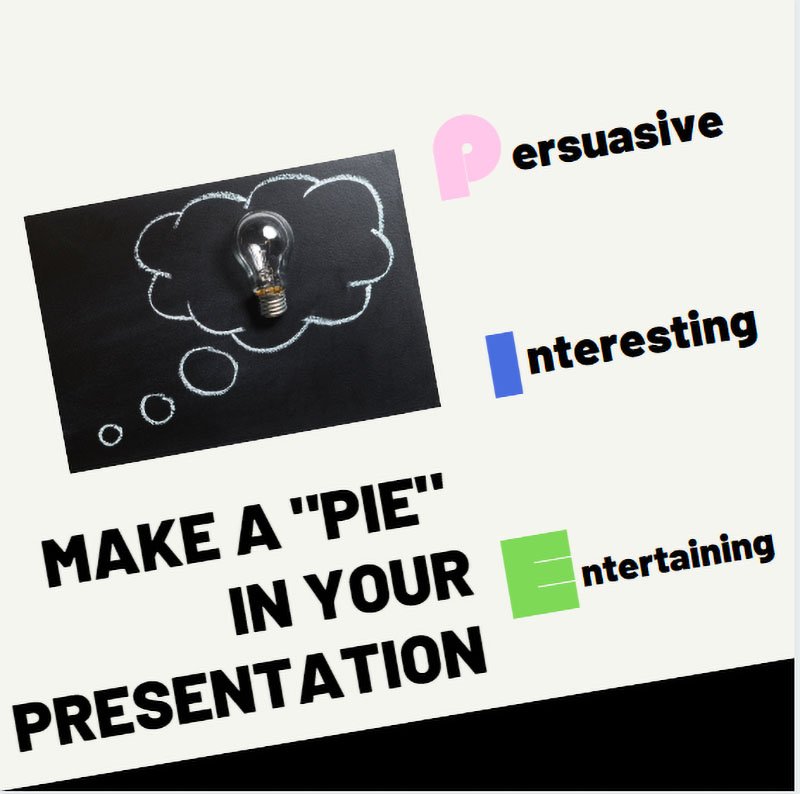Communication in Written and Oral Presentation Essay
Ledgerwood delivers a persuasive presentation with appeals to the listener through natural nonverbal communication, body pose, and suitable intonation in her Ted Talk. She manipulates the audience by staying straight, gentle, smiling, moving around the stage, and having a neutral tone with suitable intonation, making her a credible and confident speaker. The narrator quickly explains her point with the necessary information with soft body language and intonation that engages the audience more.
From the beginning, her pose is exceptionally relaxed, as opposed to being tense and nervous. She never “looks at the floor, cross her arms, or jam them into the pockets,” which signals her anxiety (Walker, 2011, p.176). Additionally, she does not have unintentional moves like “tossing your hair or an article of clothing, twisting your body, swaying, pacing, and fidgeting with your feet” that would make her seem unconfident (Walker, 2011, p.176). Instead, she stands straight and establishes good eye contact with an audience which makes her audience pay attention to her words: “talking directly to the audience is seen as more sincere and more engaging with the audience (Walker, 2011, p.176).”
Her nonverbal communication is open but not premeditated. For example, her arms and hands naturally expand beyond the confines of her body (Ledgerwood, 2018). The idea that human beings instinctively make their movements more open to exhibit force and emotion applies here. Like Ledgerwood, self-assured and assertive people use their bodies and gestures to make themselves appear more significant than they are. People with less power tend to limit their gestures and make their bodies appear smaller than they are. These observations lead us to believe that our bodies are, to some extent, a reflection of our minds. Gestures assist in the development of character and confidence, both of which contribute to the speaker’s credibility.
Frequently flashing a kind smile and using humorous anecdotes draw Ledgerwood and her audience together. A speaker does not use a frustrated tone since she knows it has “the potential to diminish your credibility as well as negatively affect your relationship with your audience (Walker, 2011, p.150).” Her experience in speech delivery is excellent. Unlike “beginning speakers who should first master the ability to stand in one place without displaying other unintentional body movements,” she skillfully moves around the stage and engages with people (Walker, 2011, p.176). These factors also depict her as a credible speaker. Significantly, her vocal delivery enhances her findings by making them more exciting and livelier. It affects her credibility when she intentionally stops after introducing herself as a professional in psychology: “Vocal delivery can also affect your relationship with the audience and your credibility (Walker, 2011, p.174).” The fact that she articulates every word impresses me as a listener and increases my interest. Her tone of voice is calm yet authoritative and engaging to the listeners.
As a result of the observations I made from Ledgerwood’s speech, I have concluded that it is essential to use nonverbal communication tactics while making a speech. I would use them to reduce uneasiness, enhance the delivery of a presentation, and assist me in coming across as more confident to an audience (Chan, 2021). Her speech proved the importance of maintaining tight contact with an audience till the end of a speech. I would personally learn to use more positive visualization, be sympathetic, use humor, and smile like Ledgerwood. Observing how she maintains her credibility and remains sincere with an audience is the best way to learn for every beginning speaker.
Chan, C. S. (2021). Helping university students discover their workplace communication needs: An eclectic and interdisciplinary approach to facilitating on-the-job learning of workplace communication. English for Specific Purposes , 64 , 55-71.
Ledgerwood, A. (2018) A simple trick to improve positive thinking [Video]. Ted.com. Web.
Walker, R. (2011). Strategic Business Communication for leaders . South-Western Cengage Learning.
- Chicago (A-D)
- Chicago (N-B)
IvyPanda. (2023, November 13). Communication in Written and Oral Presentation. https://ivypanda.com/essays/communication-in-written-and-oral-presentation/
"Communication in Written and Oral Presentation." IvyPanda , 13 Nov. 2023, ivypanda.com/essays/communication-in-written-and-oral-presentation/.
IvyPanda . (2023) 'Communication in Written and Oral Presentation'. 13 November.
IvyPanda . 2023. "Communication in Written and Oral Presentation." November 13, 2023. https://ivypanda.com/essays/communication-in-written-and-oral-presentation/.
1. IvyPanda . "Communication in Written and Oral Presentation." November 13, 2023. https://ivypanda.com/essays/communication-in-written-and-oral-presentation/.
Bibliography
IvyPanda . "Communication in Written and Oral Presentation." November 13, 2023. https://ivypanda.com/essays/communication-in-written-and-oral-presentation/.
- The Technique of a Great Speech
- Personal Public Speaking Critique
- Discussion of Jay Z Uniting Art and Music
- Non-Verbal Communication: Sender to Receiver Effectiveness
- Unintentional Injuries Among Refugee and Immigrant Children
- Linguistics and Phonetics Studies
- Differences between Real and Fake Smiles
- Unintentional Violence in Personal Experience
- Vocal Communications of Humans and Nonhuman Primates
- The Differences between Real and Fake Smiles
- The Internet Impact on Interpersonal Communication
- Internal Communication: Medium and Justification
- Reflecting on Group Presentation with Rolfe's Reflective Cycle
- “The Future of Lying” TED Talk by Jeff Hancock
- Professional Communication: "Brick by Brick" by Douglas


24 Oral Presentations
Many academic courses require students to present information to their peers and teachers in a classroom setting. This is usually in the form of a short talk, often, but not always, accompanied by visual aids such as a power point. Students often become nervous at the idea of speaking in front of a group.
This chapter is divided under five headings to establish a quick reference guide for oral presentations.

A beginner, who may have little or no experience, should read each section in full.

For the intermediate learner, who has some experience with oral presentations, review the sections you feel you need work on.

The Purpose of an Oral Presentation
Generally, oral presentation is public speaking, either individually or as a group, the aim of which is to provide information, entertain, persuade the audience, or educate. In an academic setting, oral presentations are often assessable tasks with a marking criteria. Therefore, students are being evaluated on their capacity to speak and deliver relevant information within a set timeframe. An oral presentation differs from a speech in that it usually has visual aids and may involve audience interaction; ideas are both shown and explained . A speech, on the other hand, is a formal verbal discourse addressing an audience, without visual aids and audience participation.
Types of Oral Presentations
Individual presentation.
- Breathe and remember that everyone gets nervous when speaking in public. You are in control. You’ve got this!
- Know your content. The number one way to have a smooth presentation is to know what you want to say and how you want to say it. Write it down and rehearse it until you feel relaxed and confident and do not have to rely heavily on notes while speaking.
- Eliminate ‘umms’ and ‘ahhs’ from your oral presentation vocabulary. Speak slowly and clearly and pause when you need to. It is not a contest to see who can race through their presentation the fastest or fit the most content within the time limit. The average person speaks at a rate of 125 words per minute. Therefore, if you are required to speak for 10 minutes, you will need to write and practice 1250 words for speaking. Ensure you time yourself and get it right.
- Ensure you meet the requirements of the marking criteria, including non-verbal communication skills. Make good eye contact with the audience; watch your posture; don’t fidget.
- Know the language requirements. Check if you are permitted to use a more casual, conversational tone and first-person pronouns, or do you need to keep a more formal, academic tone?
Group Presentation
- All of the above applies, however you are working as part of a group. So how should you approach group work?
- Firstly, if you are not assigned to a group by your lecturer/tutor, choose people based on their availability and accessibility. If you cannot meet face-to-face you may schedule online meetings.
- Get to know each other. It’s easier to work with friends than strangers.
- Also consider everyone’s strengths and weaknesses. This will involve a discussion that will often lead to task or role allocations within the group, however, everyone should be carrying an equal level of the workload.
- Some group members may be more focused on getting the script written, with a different section for each team member to say. Others may be more experienced with the presentation software and skilled in editing and refining power point slides so they are appropriate for the presentation. Use one visual aid (one set of power point slides) for the whole group. Take turns presenting information and ideas.
- Be patient and tolerant with each other’s learning style and personality. Do not judge people in your group based on their personal appearance, sexual orientation, gender, age, or cultural background.
- Rehearse as a group, more than once. Keep rehearsing until you have seamless transitions between speakers. Ensure you thank the previous speaker and introduce the one following you. If you are rehearsing online, but have to present in-person, try to schedule some face-to-face time that will allow you to physically practice using the technology and classroom space of the campus.
- For further information on working as a group see:
Working as a group – my.UQ – University of Queensland
Writing Your Presentation
Approach the oral presentation task just as you would any other assignment. Review the available topics, do some background reading and research to ensure you can talk about the topic for the appropriate length of time and in an informed manner. Break the question down as demonstrated in Chapter 17 Breaking Down an Assignment. Where it differs from writing an essay is that the information in the written speech must align with the visual aid. Therefore, with each idea, concept or new information you write, think about how this might be visually displayed through minimal text and the occasional use of images. Proceed to write your ideas in full, but consider that not all information will end up on a power point slide. After all, it is you who are doing the presenting , not the power point. Your presentation skills are being evaluated; this may include a small percentage for the actual visual aid. This is also why it is important that EVERYONE has a turn at speaking during the presentation, as each person receives their own individual grade.
Using Visual Aids
A whole chapter could be written about the visual aids alone, therefore I will simply refer to the key points as noted by my.UQ
To keep your audience engaged and help them to remember what you have to say, you may want to use visual aids, such as slides.
When designing slides for your presentation, make sure:
- any text is brief, grammatically correct and easy to read. Use dot points and space between lines, plus large font size (18-20 point).
- Resist the temptation to use dark slides with a light-coloured font; it is hard on the eyes
- if images and graphs are used to support your main points, they should be non-intrusive on the written work
Images and Graphs
- Your audience will respond better to slides that deliver information quickly – images and graphs are a good way to do this. However, they are not always appropriate or necessary.
When choosing images, it’s important to find images that:
- support your presentation and aren’t just decorative
- are high quality, however, using large HD picture files can make the power point file too large overall for submission via Turnitin
- you have permission to use (Creative Commons license, royalty-free, own images, or purchased)
- suggested sites for free-to-use images: Openclipart – Clipping Culture ; Beautiful Free Images & Pictures | Unsplash ; Pxfuel – Royalty free stock photos free download ; When we share, everyone wins – Creative Commons
This is a general guide. The specific requirements for your course may be different. Make sure you read through any assignment requirements carefully and ask your lecturer or tutor if you’re unsure how to meet them.
Using Visual Aids Effectively
Too often, students make an impressive power point though do not understand how to use it effectively to enhance their presentation.
- Rehearse with the power point.
- Keep the slides synchronized with your presentation; change them at the appropriate time.
- Refer to the information on the slides. Point out details; comment on images; note facts such as data.
- Don’t let the power point just be something happening in the background while you speak.
- Write notes in your script to indicate when to change slides or which slide number the information applies to.
- Pace yourself so you are not spending a disproportionate amount of time on slides at the beginning of the presentation and racing through them at the end.
- Practice, practice, practice.
Nonverbal Communication
It is clear by the name that nonverbal communication are the ways that we communicate without speaking. Many people are already aware of this, however here are a few tips that relate specifically to oral presentations.
Being confident and looking confident are two different things. Fake it until you make it.
- Avoid slouching or leaning – standing up straight instantly gives you an air of confidence.
- Move! When you’re glued to one spot as a presenter, you’re not perceived as either confident or dynamic. Use the available space effectively, though do not exaggerate your natural movements so you look ridiculous.
- If you’re someone who “speaks with their hands”, resist the urge to constantly wave them around. They detract from your message. Occasional gestures are fine.
- Be animated, but don’t fidget. Ask someone to watch you rehearse and identify if you have any nervous, repetitive habits you may be unaware of, for example, constantly touching or ‘finger-combing’ your hair, rubbing your face.
- Avoid ‘voice fidgets’ also. If you needs to cough or clear your throat, do so once then take a drink of water.
- Avoid distractions. No phone turned on. Water available but off to one side.
- Keep your distance. Don’t hover over front-row audience members; this can be intimidating.
- Have a cheerful demeaner. You do not need to grin like a Cheshire cat throughout the presentation, yet your facial expression should be relaxed and welcoming.
- Maintain an engaging TONE in your voice. Sometimes it’s not what you’re saying that is putting your audience to sleep, it’s your monotonous tone. Vary your tone and pace.
- Don’t read your presentation – PRESENT it! Internalize your script so you can speak with confidence and only occasionally refer to your notes if needed.
- Lastly, make good eye contact with your audience members so they know you are talking with them, not at them. You’re having a conversation. Watch the link below for some great speaking tips, including eye contact.
Below is a video of some great tips about public speaking from Amy Wolff at TEDx Portland [1]
- Wolff. A. [The Oregonion]. (2016, April 9). 5 public speaking tips from TEDxPortland speaker coach [Video]. YouTube. https://www.youtube.com/watch?v=JNOXZumCXNM&ab_channel=TheOregonian ↵
communication of thought by word
Academic Writing Skills Copyright © 2021 by Patricia Williamson is licensed under a Creative Commons Attribution-NonCommercial-ShareAlike 4.0 International License , except where otherwise noted.
Share This Book
Purdue Online Writing Lab Purdue OWL® College of Liberal Arts
Public Speaking and Presentations

Welcome to the Purdue OWL
This page is brought to you by the OWL at Purdue University. When printing this page, you must include the entire legal notice.
Copyright ©1995-2018 by The Writing Lab & The OWL at Purdue and Purdue University. All rights reserved. This material may not be published, reproduced, broadcast, rewritten, or redistributed without permission. Use of this site constitutes acceptance of our terms and conditions of fair use.
Public Speaking and Presentations: Tips for Success
This resource includes tips and suggestions for improving your public speaking skills.
Even if you’ve never spoken in front of a large group before, chances are you will encounter public speaking sometime during your life. Whether you’re giving a presentation for your classmates or addressing local politicians at a city council meeting, public speaking allows you to convey your thoughts and feelings in clear ways. Having the right tools can prepare you for successful public speaking and equip you with high-quality communication skills.
Know Your Audience
Different audiences require different modes of public speaking. How you address a room full of preschoolers will vary from how you address a group of professors at an academic conference. Not only will your vocabulary change, but you might alter your pacing and tone as well.
Knowing your audience also helps you decide the content of your speech. For example, if you’re presenting research to a group of scientists, you might not need to define all your scientific language. However, if you present that same research to a group of individuals who are unfamiliar with your scientific field, you may need to define your terms or use simpler language.
Recognizing the extent to which your audience is familiar with your topic helps you center your presentation around the most important elements and avoid wasting time on information your audience either 1) already knows or 2) does not need to know for the purpose of your speech.
Knowing your audience also means tailoring your information to them. Try to keep things straight and to the point; leave out extraneous anecdotes and irrelevant statistics.
Establish Your Ethos and Feel Confident in Your Subject
It’s important to let your audience know what authority you have over your subject matter. If it’s clear you are familiar with your subject and have expertise, your audience is more likely to trust what you say.
Feeling confident in your subject matter will help establish your ethos. Rather than simply memorizing the content on your PowerPoint slides or your note cards, consider yourself a “mini expert” on your topic. Read up on information related to your topic and anticipate questions from the audience. You might want to prepare a few additional examples to use if people ask follow-up questions. Being able to elaborate on your talking points will help you stay calm during a Q & A section of your presentation.
Stick to a Few Main Points
Organizing your information in a logical way not only helps you keep track of what you’re saying, but it helps your audience follow along as well. Try to emphasize a few main points in your presentation and return to them before you conclude. Summarizing your information at the end of your presentation allows your audience to walk away with a clear sense of the most important facts.
For example, if you gave a presentation on the pros and cons of wind energy in Indiana, you would first want to define wind energy to make sure you and your audience are on the same page. You might also want to give a brief history of wind energy to give context before you go into the pros and cons. From there, you could list a few pros and a few cons. Finally, you could speculate on the future of wind energy and whether Indiana could provide adequate land and infrastructure to sustain wind turbines. To conclude, restate a few of the main points (most likely the pros and cons) and end with the most important takeaway you want the audience to remember about wind energy in Indiana.
Don't be Afraid to Show Your Personality
Delivering information without any sort of flourish or style can be boring. Allowing your personality to show through your speaking keeps you feeling relaxed and natural. Even if you’re speaking about something very scientific or serious, look for ways to let your personality come through your speech.
For example, when Jeopardy! host Alex Trebek announced in March of 2019 that he had stage 4 pancreatic cancer, he still let his trademark dignity and professionalism set the tone for his address. He began his announcement by saying “it’s in keeping with my long-time policy of being open and transparent with our Jeopardy! fan base.” Later, he joked that he would need to overcome his illness in order to fulfill his contract, whose terms required him to host the show for three more years. Though the nature of Trebek's announcement could easily have justified a grim, serious tone, the host instead opted to display the charm that has made him a household name for almost thirty-five years. In doing so, he reminded his audience precisely why he is so well-loved.
Use Humor (When Appropriate)
Using humor at appropriate moments can keep your audience engaged and entertained. While not all occasions are appropriate for humor, look for moments where you can lighten the mood and add some humor.
For example, just two months after the assassination attempt on Ronald Reagan, Reagan was in the middle of giving a speech when a balloon loudly popped while he was speaking. Reagan paused his speech to say “missed me,” then immediately continued speaking. This off-the-cuff humor worked because it was appropriate, spontaneous, and did not really distract from his message.
Similarly, at the end of his final White House Correspondents Dinner, Barack Obama concluded his speech by saying “Obama out” and dropping the mic. Once again, the humor did not distract from his message, but it did provide a light-hearted shift in his tone.
Don't Let Visual Aids Distract From Your Presentation
Visual aids, such as PowerPoints or handouts, often go alongside presentations. When designing visual aids, be sure they do not distract from the content of your speech. Having too many pictures or animations can cause audience members to pay more attention to the visuals rather than what you’re saying.
However, if you present research that relies on tables or figures, having many images may help your audience better visualize the research you discuss. Be aware of the ways different types of presentations demand different types of visual aids.
Be Aware of Your Body Language
When it comes to giving a presentation, nonverbal communication is equally as important as what you’re saying. Having the appropriate posture, gestures, and movement complement the spoken element of your presentation. Below are a few simple strategies to make you appear more confident and professional.
Having confident posture can make or break a presentation. Stand up straight with your shoulders back and your arms at your sides. Slouching or crossing your arms over your chest makes you appear smaller and more insecure. However, be sure you’re not too rigid. Just because you’re standing up tall does not mean you cannot move around.
Eye contact
Making eye contact with your audience not only makes them feel connected to you but it also lets you gauge their response to you. Try to look around the room and connect with different audience members so you’re not staring at the same people the whole time. If you notice your audience starting to nod off, it might be a good time to change your tone or up your energy.
Avoid distracting or compulsive gestures
While hand gestures can help point out information in a slide or on a poster, large or quick gestures can be distracting. When using gestures, try to make them feel like a normal part of your presentation.
It’s also easy to slip into nervous gestures while presenting. Things like twirling your hair or wringing your hands can be distracting to your audience. If you know you do something like this, try to think hard about not doing it while you’re presenting.
Travel (if possible)
If you are presenting on a stage, walking back and forth can help you stay relaxed and look natural. However, be sure you’re walking slowly and confidently and you’re using an appropriate posture (described above). Try to avoid pacing, which can make you appear nervous or compulsive.
Rehearse (if Possible)
The difference between knowing your subject and rehearsing comes down to how you ultimately present your information. The more you rehearse, the more likely you are to eliminate filler words such as like and um . If possible, try practicing with a friend and have them use count the filler words you use. You can also record yourself and play back the video. The more you rehearse, the more confident you will feel when it comes time to actually speak in front of an audience.
Finally, Relax!
Although public speaking takes time and preparation, perhaps one of the most important points is to relax while you’re speaking. Delivering your information in a stiff way prevents you from appearing natural and letting your personality come through. The more relaxed you feel, the more confident your information will come across.
- SUGGESTED TOPICS
- The Magazine
- Newsletters
- Managing Yourself
- Managing Teams
- Work-life Balance
- The Big Idea
- Data & Visuals
- Reading Lists
- Case Selections
- HBR Learning
- Topic Feeds
- Account Settings
- Email Preferences
What It Takes to Give a Great Presentation
- Carmine Gallo

Five tips to set yourself apart.
Never underestimate the power of great communication. It can help you land the job of your dreams, attract investors to back your idea, or elevate your stature within your organization. But while there are plenty of good speakers in the world, you can set yourself apart out by being the person who can deliver something great over and over. Here are a few tips for business professionals who want to move from being good speakers to great ones: be concise (the fewer words, the better); never use bullet points (photos and images paired together are more memorable); don’t underestimate the power of your voice (raise and lower it for emphasis); give your audience something extra (unexpected moments will grab their attention); rehearse (the best speakers are the best because they practice — a lot).
I was sitting across the table from a Silicon Valley CEO who had pioneered a technology that touches many of our lives — the flash memory that stores data on smartphones, digital cameras, and computers. He was a frequent guest on CNBC and had been delivering business presentations for at least 20 years before we met. And yet, the CEO wanted to sharpen his public speaking skills.
- Carmine Gallo is a Harvard University instructor, keynote speaker, and author of 10 books translated into 40 languages. Gallo is the author of The Bezos Blueprint: Communication Secrets of the World’s Greatest Salesman (St. Martin’s Press).
Partner Center
Organizing Your Social Sciences Research Assignments
- Annotated Bibliography
- Analyzing a Scholarly Journal Article
- Group Presentations
- Dealing with Nervousness
- Using Visual Aids
- Grading Someone Else's Paper
- Types of Structured Group Activities
- Group Project Survival Skills
- Leading a Class Discussion
- Multiple Book Review Essay
- Reviewing Collected Works
- Writing a Case Analysis Paper
- Writing a Case Study
- About Informed Consent
- Writing Field Notes
- Writing a Policy Memo
- Writing a Reflective Paper
- Writing a Research Proposal
- Generative AI and Writing
- Acknowledgments
In the social and behavioral sciences, an oral presentation assignment involves an individual student or group of students verbally addressing an audience on a specific research-based topic, often utilizing slides to help audience members understand and retain what they both see and hear. The purpose is to inform, report, and explain the significance of research findings, and your critical analysis of those findings, within a specific period of time, often in the form of a reasoned and persuasive argument. Oral presentations are assigned to assess a student’s ability to organize and communicate relevant information effectively to a particular audience. Giving an oral presentation is considered an important learning skill because the ability to speak persuasively in front of an audience is transferable to most professional workplace settings.
Oral Presentations. Learning Co-Op. University of Wollongong, Australia; Oral Presentations. Undergraduate Research Office, Michigan State University; Oral Presentations. Presentations Research Guide, East Carolina University Libraries; Tsang, Art. “Enhancing Learners’ Awareness of Oral Presentation (Delivery) Skills in the Context of Self-regulated Learning.” Active Learning in Higher Education 21 (2020): 39-50.
Preparing for Your Oral Presentation
In some classes, writing the research paper is only part of what is required in reporting the results your work. Your professor may also require you to give an oral presentation about your study. Here are some things to think about before you are scheduled to give a presentation.
1. What should I say?
If your professor hasn't explicitly stated what the content of your presentation should focus on, think about what you want to achieve and what you consider to be the most important things that members of the audience should know about your research. Think about the following: Do I want to inform my audience, inspire them to think about my research, or convince them of a particular point of view? These questions will help frame how to approach your presentation topic.
2. Oral communication is different from written communication
Your audience has just one chance to hear your talk; they can't "re-read" your words if they get confused. Focus on being clear, particularly if the audience can't ask questions during the talk. There are two well-known ways to communicate your points effectively, often applied in combination. The first is the K.I.S.S. method [Keep It Simple Stupid]. Focus your presentation on getting two to three key points across. The second approach is to repeat key insights: tell them what you're going to tell them [forecast], tell them [explain], and then tell them what you just told them [summarize].
3. Think about your audience
Yes, you want to demonstrate to your professor that you have conducted a good study. But professors often ask students to give an oral presentation to practice the art of communicating and to learn to speak clearly and audibly about yourself and your research. Questions to think about include: What background knowledge do they have about my topic? Does the audience have any particular interests? How am I going to involve them in my presentation?
4. Create effective notes
If you don't have notes to refer to as you speak, you run the risk of forgetting something important. Also, having no notes increases the chance you'll lose your train of thought and begin relying on reading from the presentation slides. Think about the best ways to create notes that can be easily referred to as you speak. This is important! Nothing is more distracting to an audience than the speaker fumbling around with notes as they try to speak. It gives the impression of being disorganized and unprepared.
NOTE: A good strategy is to have a page of notes for each slide so that the act of referring to a new page helps remind you to move to the next slide. This also creates a natural pause that allows your audience to contemplate what you just presented.
Strategies for creating effective notes for yourself include the following:
- Choose a large, readable font [at least 18 point in Ariel ]; avoid using fancy text fonts or cursive text.
- Use bold text, underlining, or different-colored text to highlight elements of your speech that you want to emphasize. Don't over do it, though. Only highlight the most important elements of your presentation.
- Leave adequate space on your notes to jot down additional thoughts or observations before and during your presentation. This is also helpful when writing down your thoughts in response to a question or to remember a multi-part question [remember to have a pen with you when you give your presentation].
- Place a cue in the text of your notes to indicate when to move to the next slide, to click on a link, or to take some other action, such as, linking to a video. If appropriate, include a cue in your notes if there is a point during your presentation when you want the audience to refer to a handout.
- Spell out challenging words phonetically and practice saying them ahead of time. This is particularly important for accurately pronouncing people’s names, technical or scientific terminology, words in a foreign language, or any unfamiliar words.
Creating and Using Overheads. Writing@CSU. Colorado State University; Kelly, Christine. Mastering the Art of Presenting. Inside Higher Education Career Advice; Giving an Oral Presentation. Academic Skills Centre. University of Canberra; Lucas, Stephen. The Art of Public Speaking . 12th edition. Boston, MA: McGraw-Hill Higher Education, 2015; Peery, Angela B. Creating Effective Presentations: Staff Development with Impact . Lanham, MD: Rowman and Littlefield Education, 2011; Peoples, Deborah Carter. Guidelines for Oral Presentations. Ohio Wesleyan University Libraries; Perret, Nellie. Oral Presentations. The Lab Report. University College Writing Centre. University of Toronto; Speeches. The Writing Center. University of North Carolina; Storz, Carl et al. Oral Presentation Skills. Institut national de télécommunications, EVRY FRANCE.
Organizing the Content
In the process of organizing the content of your presentation, begin by thinking about what you want to achieve and how are you going to involve your audience in the presentation.
- Brainstorm your topic and write a rough outline. Don’t get carried away—remember you have a limited amount of time for your presentation.
- Organize your material and draft what you want to say [see below].
- Summarize your draft into key points to write on your presentation slides and/or note cards and/or handout.
- Prepare your visual aids.
- Rehearse your presentation and practice getting the presentation completed within the time limit given by your professor. Ask a friend to listen and time you.
GENERAL OUTLINE
I. Introduction [may be written last]
- Capture your listeners’ attention . Begin with a question, an amusing story, a provocative statement, a personal story, or anything that will engage your audience and make them think. For example, "As a first-gen student, my hardest adjustment to college was the amount of papers I had to write...."
- State your purpose . For example, "I’m going to talk about..."; "This morning I want to explain…."
- Present an outline of your talk . For example, “I will concentrate on the following points: First of all…Then…This will lead to…And finally…"
II. The Body
- Present your main points one by one in a logical order .
- Pause at the end of each point . Give people time to take notes, or time to think about what you are saying.
- Make it clear when you move to another point . For example, “The next point is that...”; “Of course, we must not forget that...”; “However, it's important to realize that....”
- Use clear examples to illustrate your points and/or key findings .
- If appropriate, consider using visual aids to make your presentation more interesting [e.g., a map, chart, picture, link to a video, etc.].
III. The Conclusion
- Leave your audience with a clear summary of everything that you have covered.
- Summarize the main points again . For example, use phrases like: "So, in conclusion..."; "To recap the main issues...," "In summary, it is important to realize...."
- Restate the purpose of your talk, and say that you have achieved your aim : "My intention was ..., and it should now be clear that...."
- Don't let the talk just fizzle out . Make it obvious that you have reached the end of the presentation.
- Thank the audience, and invite questions : "Thank you. Are there any questions?"
NOTE: When asking your audience if anyone has any questions, give people time to contemplate what you have said and to formulate a question. It may seem like an awkward pause to wait ten seconds or so for someone to raise their hand, but it's frustrating to have a question come to mind but be cutoff because the presenter rushed to end the talk.
ANOTHER NOTE: If your last slide includes any contact information or other important information, leave it up long enough to ensure audience members have time to write the information down. Nothing is more frustrating to an audience member than wanting to jot something down, but the presenter closes the slides immediately after finishing.
Creating and Using Overheads. Writing@CSU. Colorado State University; Giving an Oral Presentation. Academic Skills Centre. University of Canberra; Lucas, Stephen. The Art of Public Speaking . 12th ed. Boston, MA: McGraw-Hill Higher Education, 2015; Peery, Angela B. Creating Effective Presentations: Staff Development with Impact . Lanham, MD: Rowman and Littlefield Education, 2011; Peoples, Deborah Carter. Guidelines for Oral Presentations. Ohio Wesleyan University Libraries; Perret, Nellie. Oral Presentations. The Lab Report. University College Writing Centre. University of Toronto; Speeches. The Writing Center. University of North Carolina; Storz, Carl et al. Oral Presentation Skills. Institut national de télécommunications, EVRY FRANCE.
Delivering Your Presentation
When delivering your presentation, keep in mind the following points to help you remain focused and ensure that everything goes as planned.
Pay Attention to Language!
- Keep it simple . The aim is to communicate, not to show off your vocabulary. Using complex words or phrases increases the chance of stumbling over a word and losing your train of thought.
- Emphasize the key points . Make sure people realize which are the key points of your study. Repeat them using different phrasing to help the audience remember them.
- Check the pronunciation of difficult, unusual, or foreign words beforehand . Keep it simple, but if you have to use unfamiliar words, write them out phonetically in your notes and practice saying them. This is particularly important when pronouncing proper names. Give the definition of words that are unusual or are being used in a particular context [e.g., "By using the term affective response, I am referring to..."].
Use Your Voice to Communicate Clearly
- Speak loud enough for everyone in the room to hear you . Projecting your voice may feel uncomfortably loud at first, but if people can't hear you, they won't try to listen. However, moderate your voice if you are talking in front of a microphone.
- Speak slowly and clearly . Don’t rush! Speaking fast makes it harder for people to understand you and signals being nervous.
- Avoid the use of "fillers." Linguists refer to utterances such as um, ah, you know, and like as fillers. They occur most often during transitions from one idea to another and, if expressed too much, are distracting to an audience. The better you know your presentation, the better you can control these verbal tics.
- Vary your voice quality . If you always use the same volume and pitch [for example, all loud, or all soft, or in a monotone] during your presentation, your audience will stop listening. Use a higher pitch and volume in your voice when you begin a new point or when emphasizing the transition to a new point.
- Speakers with accents need to slow down [so do most others]. Non-native speakers often speak English faster than we slow-mouthed native speakers, usually because most non-English languages flow more quickly than English. Slowing down helps the audience to comprehend what you are saying.
- Slow down for key points . These are also moments in your presentation to consider using body language, such as hand gestures or leaving the podium to point to a slide, to help emphasize key points.
- Use pauses . Don't be afraid of short periods of silence. They give you a chance to gather your thoughts, and your audience an opportunity to think about what you've just said.
Also Use Your Body Language to Communicate!
- Stand straight and comfortably . Do not slouch or shuffle about. If you appear bored or uninterested in what your talking about, the audience will emulate this as well. Wear something comfortable. This is not the time to wear an itchy wool sweater or new high heel shoes for the first time.
- Hold your head up . Look around and make eye contact with people in the audience [or at least pretend to]. Do not just look at your professor or your notes the whole time! Looking up at your your audience brings them into the conversation. If you don't include the audience, they won't listen to you.
- When you are talking to your friends, you naturally use your hands, your facial expression, and your body to add to your communication . Do it in your presentation as well. It will make things far more interesting for the audience.
- Don't turn your back on the audience and don't fidget! Neither moving around nor standing still is wrong. Practice either to make yourself comfortable. Even when pointing to a slide, don't turn your back; stand at the side and turn your head towards the audience as you speak.
- Keep your hands out of your pocket . This is a natural habit when speaking. One hand in your pocket gives the impression of being relaxed, but both hands in pockets looks too casual and should be avoided.
Interact with the Audience
- Be aware of how your audience is reacting to your presentation . Are they interested or bored? If they look confused, stop and ask them [e.g., "Is anything I've covered so far unclear?"]. Stop and explain a point again if needed.
- Check after highlighting key points to ask if the audience is still with you . "Does that make sense?"; "Is that clear?" Don't do this often during the presentation but, if the audience looks disengaged, interrupting your talk to ask a quick question can re-focus their attention even if no one answers.
- Do not apologize for anything . If you believe something will be hard to read or understand, don't use it. If you apologize for feeling awkward and nervous, you'll only succeed in drawing attention to the fact you are feeling awkward and nervous and your audience will begin looking for this, rather than focusing on what you are saying.
- Be open to questions . If someone asks a question in the middle of your talk, answer it. If it disrupts your train of thought momentarily, that's ok because your audience will understand. Questions show that the audience is listening with interest and, therefore, should not be regarded as an attack on you, but as a collaborative search for deeper understanding. However, don't engage in an extended conversation with an audience member or the rest of the audience will begin to feel left out. If an audience member persists, kindly tell them that the issue can be addressed after you've completed the rest of your presentation and note to them that their issue may be addressed later in your presentation [it may not be, but at least saying so allows you to move on].
- Be ready to get the discussion going after your presentation . Professors often want a brief discussion to take place after a presentation. Just in case nobody has anything to say or no one asks any questions, be prepared to ask your audience some provocative questions or bring up key issues for discussion.
Amirian, Seyed Mohammad Reza and Elaheh Tavakoli. “Academic Oral Presentation Self-Efficacy: A Cross-Sectional Interdisciplinary Comparative Study.” Higher Education Research and Development 35 (December 2016): 1095-1110; Balistreri, William F. “Giving an Effective Presentation.” Journal of Pediatric Gastroenterology and Nutrition 35 (July 2002): 1-4; Creating and Using Overheads. Writing@CSU. Colorado State University; Enfield, N. J. How We Talk: The Inner Workings of Conversation . New York: Basic Books, 2017; Giving an Oral Presentation. Academic Skills Centre. University of Canberra; Lucas, Stephen. The Art of Public Speaking . 12th ed. Boston, MA: McGraw-Hill Higher Education, 2015; Peery, Angela B. Creating Effective Presentations: Staff Development with Impact . Lanham, MD: Rowman and Littlefield Education, 2011; Peoples, Deborah Carter. Guidelines for Oral Presentations. Ohio Wesleyan University Libraries; Perret, Nellie. Oral Presentations. The Lab Report. University College Writing Centre. University of Toronto; Speeches. The Writing Center. University of North Carolina; Storz, Carl et al. Oral Presentation Skills. Institut national de télécommunications, EVRY FRANCE.
Speaking Tip
Your First Words are Your Most Important Words!
Your introduction should begin with something that grabs the attention of your audience, such as, an interesting statistic, a brief narrative or story, or a bold assertion, and then clearly tell the audience in a well-crafted sentence what you plan to accomplish in your presentation. Your introductory statement should be constructed so as to invite the audience to pay close attention to your message and to give the audience a clear sense of the direction in which you are about to take them.
Lucas, Stephen. The Art of Public Speaking . 12th edition. Boston, MA: McGraw-Hill Higher Education, 2015.
Another Speaking Tip
Talk to Your Audience, Don't Read to Them!
A presentation is not the same as reading a prepared speech or essay. If you read your presentation as if it were an essay, your audience will probably understand very little about what you say and will lose their concentration quickly. Use notes, cue cards, or presentation slides as prompts that highlight key points, and speak to your audience . Include everyone by looking at them and maintaining regular eye-contact [but don't stare or glare at people]. Limit reading text to quotes or to specific points you want to emphasize.
- << Previous: Analyzing a Scholarly Journal Article
- Next: Group Presentations >>
- Last Updated: Mar 6, 2024 1:00 PM
- URL: https://libguides.usc.edu/writingguide/assignments
Ideas and insights from Harvard Business Publishing Corporate Learning

Powerful and Effective Presentation Skills: More in Demand Now Than Ever

When we talk with our L&D colleagues from around the globe, we often hear that presentation skills training is one of the top opportunities they’re looking to provide their learners. And this holds true whether their learners are individual contributors, people managers, or senior leaders. This is not surprising.
Effective communications skills are a powerful career activator, and most of us are called upon to communicate in some type of formal presentation mode at some point along the way.
For instance, you might be asked to brief management on market research results, walk your team through a new process, lay out the new budget, or explain a new product to a client or prospect. Or you may want to build support for a new idea, bring a new employee into the fold, or even just present your achievements to your manager during your performance review.
And now, with so many employees working from home or in hybrid mode, and business travel in decline, there’s a growing need to find new ways to make effective presentations when the audience may be fully virtual or a combination of in person and remote attendees.
Whether you’re making a standup presentation to a large live audience, or a sit-down one-on-one, whether you’re delivering your presentation face to face or virtually, solid presentation skills matter.
Even the most seasoned and accomplished presenters may need to fine-tune or update their skills. Expectations have changed over the last decade or so. Yesterday’s PowerPoint which primarily relied on bulleted points, broken up by the occasional clip-art image, won’t cut it with today’s audience.
The digital revolution has revolutionized the way people want to receive information. People expect presentations that are more visually interesting. They expect to see data, metrics that support assertions. And now, with so many previously in-person meetings occurring virtually, there’s an entirely new level of technical preparedness required.
The leadership development tools and the individual learning opportunities you’re providing should include presentation skills training that covers both the evergreen fundamentals and the up-to-date capabilities that can make or break a presentation.
So, just what should be included in solid presentation skills training? Here’s what I think.
The fundamentals will always apply When it comes to making a powerful and effective presentation, the fundamentals will always apply. You need to understand your objective. Is it strictly to convey information, so that your audience’s knowledge is increased? Is it to persuade your audience to take some action? Is it to convince people to support your idea? Once you understand what your objective is, you need to define your central message. There may be a lot of things you want to share with your audience during your presentation, but find – and stick with – the core, the most important point you want them to walk away with. And make sure that your message is clear and compelling.
You also need to tailor your presentation to your audience. Who are they and what might they be expecting? Say you’re giving a product pitch to a client. A technical team may be interested in a lot of nitty-gritty product detail. The business side will no doubt be more interested in what returns they can expect on their investment.
Another consideration is the setting: is this a formal presentation to a large audience with questions reserved for the end, or a presentation in a smaller setting where there’s the possibility for conversation throughout? Is your presentation virtual or in-person? To be delivered individually or as a group? What time of the day will you be speaking? Will there be others speaking before you and might that impact how your message will be received?
Once these fundamentals are established, you’re in building mode. What are the specific points you want to share that will help you best meet your objective and get across your core message? Now figure out how to convey those points in the clearest, most straightforward, and succinct way. This doesn’t mean that your presentation has to be a series of clipped bullet points. No one wants to sit through a presentation in which the presenter reads through what’s on the slide. You can get your points across using stories, fact, diagrams, videos, props, and other types of media.
Visual design matters While you don’t want to clutter up your presentation with too many visual elements that don’t serve your objective and can be distracting, using a variety of visual formats to convey your core message will make your presentation more memorable than slides filled with text. A couple of tips: avoid images that are cliched and overdone. Be careful not to mix up too many different types of images. If you’re using photos, stick with photos. If you’re using drawn images, keep the style consistent. When data are presented, stay consistent with colors and fonts from one type of chart to the next. Keep things clear and simple, using data to support key points without overwhelming your audience with too much information. And don’t assume that your audience is composed of statisticians (unless, of course, it is).
When presenting qualitative data, brief videos provide a way to engage your audience and create emotional connection and impact. Word clouds are another way to get qualitative data across.
Practice makes perfect You’ve pulled together a perfect presentation. But it likely won’t be perfect unless it’s well delivered. So don’t forget to practice your presentation ahead of time. Pro tip: record yourself as you practice out loud. This will force you to think through what you’re going to say for each element of your presentation. And watching your recording will help you identify your mistakes—such as fidgeting, using too many fillers (such as “umm,” or “like”), or speaking too fast.
A key element of your preparation should involve anticipating any technical difficulties. If you’ve embedded videos, make sure they work. If you’re presenting virtually, make sure that the lighting is good, and that your speaker and camera are working. Whether presenting in person or virtually, get there early enough to work out any technical glitches before your presentation is scheduled to begin. Few things are a bigger audience turn-off than sitting there watching the presenter struggle with the delivery mechanisms!
Finally, be kind to yourself. Despite thorough preparation and practice, sometimes, things go wrong, and you need to recover in the moment, adapt, and carry on. It’s unlikely that you’ll have caused any lasting damage and the important thing is to learn from your experience, so your next presentation is stronger.
How are you providing presentation skills training for your learners?
Manika Gandhi is Senior Learning Design Manager at Harvard Business Publishing Corporate Learning. Email her at [email protected] .
Let’s talk
Change isn’t easy, but we can help. Together we’ll create informed and inspired leaders ready to shape the future of your business.
© 2024 Harvard Business School Publishing. All rights reserved. Harvard Business Publishing is an affiliate of Harvard Business School.
- Privacy Policy
- Copyright Information
- Terms of Use
- About Harvard Business Publishing
- Higher Education
- Harvard Business Review
- Harvard Business School
We use cookies to understand how you use our site and to improve your experience. By continuing to use our site, you accept our use of cookies and revised Privacy Policy .
Cookie and Privacy Settings
We may request cookies to be set on your device. We use cookies to let us know when you visit our websites, how you interact with us, to enrich your user experience, and to customize your relationship with our website.
Click on the different category headings to find out more. You can also change some of your preferences. Note that blocking some types of cookies may impact your experience on our websites and the services we are able to offer.
These cookies are strictly necessary to provide you with services available through our website and to use some of its features.
Because these cookies are strictly necessary to deliver the website, refusing them will have impact how our site functions. You always can block or delete cookies by changing your browser settings and force blocking all cookies on this website. But this will always prompt you to accept/refuse cookies when revisiting our site.
We fully respect if you want to refuse cookies but to avoid asking you again and again kindly allow us to store a cookie for that. You are free to opt out any time or opt in for other cookies to get a better experience. If you refuse cookies we will remove all set cookies in our domain.
We provide you with a list of stored cookies on your computer in our domain so you can check what we stored. Due to security reasons we are not able to show or modify cookies from other domains. You can check these in your browser security settings.
We also use different external services like Google Webfonts, Google Maps, and external Video providers. Since these providers may collect personal data like your IP address we allow you to block them here. Please be aware that this might heavily reduce the functionality and appearance of our site. Changes will take effect once you reload the page.
Google Webfont Settings:
Google Map Settings:
Google reCaptcha Settings:
Vimeo and Youtube video embeds:
You can read about our cookies and privacy settings in detail on our Privacy Policy Page.
- - Google Chrome
Intended for healthcare professionals
- Access provided by Google Indexer
- My email alerts
- BMA member login
- Username * Password * Forgot your log in details? Need to activate BMA Member Log In Log in via OpenAthens Log in via your institution

Search form
- Advanced search
- Search responses
- Search blogs
- How to prepare and...
How to prepare and deliver an effective oral presentation
- Related content
- Peer review
- Lucia Hartigan , registrar 1 ,
- Fionnuala Mone , fellow in maternal fetal medicine 1 ,
- Mary Higgins , consultant obstetrician 2
- 1 National Maternity Hospital, Dublin, Ireland
- 2 National Maternity Hospital, Dublin; Obstetrics and Gynaecology, Medicine and Medical Sciences, University College Dublin
- luciahartigan{at}hotmail.com
The success of an oral presentation lies in the speaker’s ability to transmit information to the audience. Lucia Hartigan and colleagues describe what they have learnt about delivering an effective scientific oral presentation from their own experiences, and their mistakes
The objective of an oral presentation is to portray large amounts of often complex information in a clear, bite sized fashion. Although some of the success lies in the content, the rest lies in the speaker’s skills in transmitting the information to the audience. 1
Preparation
It is important to be as well prepared as possible. Look at the venue in person, and find out the time allowed for your presentation and for questions, and the size of the audience and their backgrounds, which will allow the presentation to be pitched at the appropriate level.
See what the ambience and temperature are like and check that the format of your presentation is compatible with the available computer. This is particularly important when embedding videos. Before you begin, look at the video on stand-by and make sure the lights are dimmed and the speakers are functioning.
For visual aids, Microsoft PowerPoint or Apple Mac Keynote programmes are usual, although Prezi is increasing in popularity. Save the presentation on a USB stick, with email or cloud storage backup to avoid last minute disasters.
When preparing the presentation, start with an opening slide containing the title of the study, your name, and the date. Begin by addressing and thanking the audience and the organisation that has invited you to speak. Typically, the format includes background, study aims, methodology, results, strengths and weaknesses of the study, and conclusions.
If the study takes a lecturing format, consider including “any questions?” on a slide before you conclude, which will allow the audience to remember the take home messages. Ideally, the audience should remember three of the main points from the presentation. 2
Have a maximum of four short points per slide. If you can display something as a diagram, video, or a graph, use this instead of text and talk around it.
Animation is available in both Microsoft PowerPoint and the Apple Mac Keynote programme, and its use in presentations has been demonstrated to assist in the retention and recall of facts. 3 Do not overuse it, though, as it could make you appear unprofessional. If you show a video or diagram don’t just sit back—use a laser pointer to explain what is happening.
Rehearse your presentation in front of at least one person. Request feedback and amend accordingly. If possible, practise in the venue itself so things will not be unfamiliar on the day. If you appear comfortable, the audience will feel comfortable. Ask colleagues and seniors what questions they would ask and prepare responses to these questions.
It is important to dress appropriately, stand up straight, and project your voice towards the back of the room. Practise using a microphone, or any other presentation aids, in advance. If you don’t have your own presenting style, think of the style of inspirational scientific speakers you have seen and imitate it.
Try to present slides at the rate of around one slide a minute. If you talk too much, you will lose your audience’s attention. The slides or videos should be an adjunct to your presentation, so do not hide behind them, and be proud of the work you are presenting. You should avoid reading the wording on the slides, but instead talk around the content on them.
Maintain eye contact with the audience and remember to smile and pause after each comment, giving your nerves time to settle. Speak slowly and concisely, highlighting key points.
Do not assume that the audience is completely familiar with the topic you are passionate about, but don’t patronise them either. Use every presentation as an opportunity to teach, even your seniors. The information you are presenting may be new to them, but it is always important to know your audience’s background. You can then ensure you do not patronise world experts.
To maintain the audience’s attention, vary the tone and inflection of your voice. If appropriate, use humour, though you should run any comments or jokes past others beforehand and make sure they are culturally appropriate. Check every now and again that the audience is following and offer them the opportunity to ask questions.
Finishing up is the most important part, as this is when you send your take home message with the audience. Slow down, even though time is important at this stage. Conclude with the three key points from the study and leave the slide up for a further few seconds. Do not ramble on. Give the audience a chance to digest the presentation. Conclude by acknowledging those who assisted you in the study, and thank the audience and organisation. If you are presenting in North America, it is usual practice to conclude with an image of the team. If you wish to show references, insert a text box on the appropriate slide with the primary author, year, and paper, although this is not always required.
Answering questions can often feel like the most daunting part, but don’t look upon this as negative. Assume that the audience has listened and is interested in your research. Listen carefully, and if you are unsure about what someone is saying, ask for the question to be rephrased. Thank the audience member for asking the question and keep responses brief and concise. If you are unsure of the answer you can say that the questioner has raised an interesting point that you will have to investigate further. Have someone in the audience who will write down the questions for you, and remember that this is effectively free peer review.
Be proud of your achievements and try to do justice to the work that you and the rest of your group have done. You deserve to be up on that stage, so show off what you have achieved.
Competing interests: We have read and understood the BMJ Group policy on declaration of interests and declare the following interests: None.
- ↵ Rovira A, Auger C, Naidich TP. How to prepare an oral presentation and a conference. Radiologica 2013 ; 55 (suppl 1): 2 -7S. OpenUrl
- ↵ Bourne PE. Ten simple rules for making good oral presentations. PLos Comput Biol 2007 ; 3 : e77 . OpenUrl PubMed
- ↵ Naqvi SH, Mobasher F, Afzal MA, Umair M, Kohli AN, Bukhari MH. Effectiveness of teaching methods in a medical institute: perceptions of medical students to teaching aids. J Pak Med Assoc 2013 ; 63 : 859 -64. OpenUrl

- Peterborough

Preparing and Delivering Oral Presentations
Fundamentals of presenting, plan a presentation.
The fundamentals of public speaking remain the same in any context, be it classroom, conference, parliament or crowded city square. Good public speakers use simple and clear language to communicate complex points. They pause when they speak, and they deliver their message with confidence derived from their knowledge and preparation.
A good presentation:
Has a focused and relevant message
- Is clearly organized and supported by evidence
- Demonstrates understanding and analysis of ideas
- Is delivered calmly and confidently
Focus and Purpose
A presentation is not a dry list of disconnected facts. Like lab reports or essays, it makes a specific point. Start by asking yourself “So What?” Determine thethe most important point you wish to make and identify why it is important.
Plan your presentation to suit your audience. Consider their familiarity with the subject and their purpose for listening to your presentation. Classmates will likely have some background on the topic, and because they are keenly aware that they will eventually present to you, they are usually quite generous in their reception of your talk.
A logical structure supports a clear and focused message, and it stops you from leaping from idea to idea, which can make it difficult for your audience to understand your talk.
Introduction:
- Tell the audience who you are and present your main argument with key background information.
- Explain why your presentation is important.
- Build a rapport with the audience to help them follow what comes next.
Body of your presentation:
- The largest section of your presentation
- It supports your main argument with specific examples.
- Visual aids clarify your points and lend credibility to your presentation.
Conclusion:
- A strong conclusion summarizes your main points.
- Use key words from your introduction to briefly re-state your argument.
- End your presentation with a simple, strong statement.
Preparation
Rather than prepare a script, create a plan for each section or idea with point form notes. A good presentation is not written down word for word or memorized but instead is a discussion of a subject you know inside and out. Speaking from point form notes keeps your delivery fresh. Remember, you are talking to people, not reading at them.
Key technical details can be written down, but it make sure that you include only essential information as too many technical details may confuse your audience and cause them to tune out.
Visual Aids
Visual aids, like PowerPoint slides or printed handouts, offer structure for your presentation and help the audience follow the main points. Visual aids may be bulleted lists or outlines, charts or figures, or images that show important details that would take time to explain orally. Use visual aids to complement, rather than compete, with your presentation. If they are not necessary or helpful, don’t use them.
And never read the exact words from slides that you present.
For a detailed examination of using PowerPoint, explore our “Using PowerPoint" guide .
Rehearse! Focus on tone, volume, word choice, transitions, pauses and pacing. Note time limits. Time yourself and revise as appropriate. Practice your presentation before a friend or family member and ask for feedback.
Get to the room well ahead of time. Listen to some relaxing music if this helps you. Make sure the technology is all up and running if you need to use it.
Chat with people in the audience before you present. This breaks the ice, creates connections, personalizes the encounter and helps you feel more confident.
Experts often suggest that you focus your presentation on a group of individuals instead of the entire audience. This makes it seem as if you are speaking to a smaller group
Pace and Volume
Take it slow. The single biggest mistake inexperienced speakers make is going too fast. [SB1] Remember that your audience is hearing the material for the first time and isn't nearly as familiar with the topic as you are.
Speak loudly and clearly. Practice pronouncing difficult words in advance.
Body Language and Eye Contact
Make and maintain eye contact with your audience. Always face your audience; avoid reading from your slide presentation and try to look up from your notes regularly.
Stand tall at the front of the room. Don’t sit down, lean on a desk or hide behind a lectern. Try not to sway back and forth.
Answering Questions
Leave time to answer questions, and prepare in advance for possible questions your audience may ask. You can pause to gather your thoughts before you reply, and if something is outside of your comfort zone, simply (and confidently) say “that is outside the scope of this research.”
Share your Personality
Try to have some fun, put your personality into the presentation while maintaining professional decorum. Make the presentation uniquely yours – people will remember you and your message.

Roberts Academic Medicine Handbook pp 389–393 Cite as
How to Prepare and Give a Scholarly Oral Presentation
- Cheryl Gore-Felton 2
- First Online: 01 January 2020
1151 Accesses
Building an academic reputation is one of the most important functions of an academic faculty member, and one of the best ways to build a reputation is by giving scholarly presentations, particularly those that are oral presentations. Earning the reputation of someone who can give an excellent talk often results in invitations to give keynote addresses at regional and national conferences, which increases a faculty member’s visibility along with their area of research. Given the importance of oral presentations, it is surprising that few graduate or medical programs provide courses on how to give a talk. This is unfortunate because there are skills that can be learned and strategies that can be used to improve the ability to give an interesting, well-received oral presentation. To that end, the aim of this chapter is to provide faculty with best practices and tips on preparing and giving an academic oral presentation.
This is a preview of subscription content, log in via an institution .
Buying options
- Available as PDF
- Read on any device
- Instant download
- Own it forever
- Available as EPUB and PDF
- Compact, lightweight edition
- Dispatched in 3 to 5 business days
- Free shipping worldwide - see info
Tax calculation will be finalised at checkout
Purchases are for personal use only
Pashler H, McDaniel M, Rohrer D, Bjork R. Learning styles: concepts and evidence. Psychol Sci Public Interest. 2009;9:105–19.
Article Google Scholar
Newsam JM. Out in front: making your mark with a scientific presentation. USA: First Printing; 2019.
Google Scholar
Ericsson AK, Krampe RT, Tesch-Romer C. The role of deliberate practice in the acquisition of expert performance. Psychol Rev. 1993;100:363–406.
Seaward BL. Managing stress: principles and strategies for health and well-being. 7th ed. Jones & Bartlett Learning, LLC: Burlington; 2012.
Krantz WB. Presenting an effective and dynamic technical paper: a guidebook for novice and experienced speakers in a multicultural world. Philadelphia: Elsevier; 2017.
Download references
Author information
Authors and affiliations.
Department of Psychiatry and Behavioral Sciences, Stanford University School of Medicine, Stanford, CA, USA
Cheryl Gore-Felton
You can also search for this author in PubMed Google Scholar
Corresponding author
Correspondence to Cheryl Gore-Felton .
Editor information
Editors and affiliations.
Laura Weiss Roberts
Rights and permissions
Reprints and permissions
Copyright information
© 2020 Springer Nature Switzerland AG
About this chapter
Cite this chapter.
Gore-Felton, C. (2020). How to Prepare and Give a Scholarly Oral Presentation. In: Roberts, L. (eds) Roberts Academic Medicine Handbook. Springer, Cham. https://doi.org/10.1007/978-3-030-31957-1_42
Download citation
DOI : https://doi.org/10.1007/978-3-030-31957-1_42
Published : 01 January 2020
Publisher Name : Springer, Cham
Print ISBN : 978-3-030-31956-4
Online ISBN : 978-3-030-31957-1
eBook Packages : Medicine Medicine (R0)
Share this chapter
Anyone you share the following link with will be able to read this content:
Sorry, a shareable link is not currently available for this article.
Provided by the Springer Nature SharedIt content-sharing initiative
- Publish with us
Policies and ethics
- Find a journal
- Track your research

Want to create or adapt books like this? Learn more about how Pressbooks supports open publishing practices.
Chapter 3: Oral Presentations
Patricia Williamson
Many academic courses require students to present information to their peers and teachers in a classroom setting. Such presentations are usually in the form of a short talk, often, but not always, accompanied by visual aids such as a PowerPoint. Yet, students often become nervous at the idea of speaking in front of a group. This chapter aims to help calms those nerves.
This chapter is divided under five headings to establish a quick reference guide for oral presentations.
- A beginner, who may have little or no experience, should read each section in full.
- For the intermediate learner, who has some experience with oral presentations, review the sections you feel you need work on.
- If you are an experienced presenter then you may wish to jog your memory about the basics or gain some fresh insights about technique.
The Purpose of an Oral Presentation
Generally, oral presentation is public speaking, either individually or as a group, the aim of which is to provide information, to entertain, to persuade the audience, or to educate. In an academic setting, oral presentations are often assessable tasks with a marking criteria. Therefore, students are being evaluated on two separate-but-related competencies within a set timeframe: the ability to speak and the quality of the spoken content. An oral presentation differs from a speech in that it usually has visual aids and may involve audience interaction; ideas are both shown and explained . A speech, on the other hand, is a formal verbal discourse addressing an audience, without visual aids and audience participation.
Tips for Types of Oral Presentations
Individual presentation.
- Know your content. The number one way to have a smooth presentation is to know what you want to say and how you want to say it. Write it down and rehearse it until you feel relaxed and confident and do not have to rely heavily on notes while speaking.
- Eliminate ‘umms’ and ‘ahhs’ from your oral presentation vocabulary. Speak slowly and clearly and pause when you need to. It is not a contest to see who can race through their presentation the fastest or fit the most content within the time limit. The average person speaks at a rate of 125 words per minute. Therefore, if you are required to speak for 10 minutes, you will need to write and practice 1250 words for speaking. Ensure you time yourself and get it right.
- Ensure you meet the requirements of the marking criteria, including non-verbal communication skills. Make good eye contact with the audience; watch your posture; don’t fidget.
- Know the language requirements. Check if you are permitted to use a more casual, conversational tone and first-person pronouns, or do you need to keep a more formal, academic tone?
- Breathe. You are in control. You’ve got this!
Group Presentation
- All of the above applies; however, you are working as part of a group. So how should you approach group work?
- Firstly, if you are not assigned to a group by your lecturer/tutor, choose people based on their availability and accessibility. If you cannot meet face-to-face you may schedule online meetings.
- Get to know each other. It’s easier to work with friends than strangers.
- Consider everyone’s strengths and weaknesses. Determining strengths and weaknesses will involve a discussion that will often lead to task or role allocations within the group; however, everyone should be carrying an equal level of the workload.
- Some group members may be more focused on getting the script written, with a different section for each team member to say. Others may be more experienced with the presentation software and skilled in editing and refining PowerPoint slides so they are appropriate for the presentation. Use one visual aid (one set of PowerPoint slides) for the whole group; you may consider using a shared cloud drive so that there is no need to integrate slides later on.
- Be patient and tolerant with each other’s learning style and personality. Do not judge people in your group based on their personal appearance, sexual orientation, gender, age, or cultural background.
- Rehearse as a group–more than once. Keep rehearsing until you have seamless transitions between speakers. Ensure you thank the previous speaker and introduce the one following you. If you are rehearsing online, but have to present in-person, try to schedule some face-to-face time that will allow you to physically practice using the technology and classroom space of the campus.
Writing Your Presentation
Approach the oral presentation task just as you would any other assignment. Review the available topics and then do some background reading and research to ensure you can talk about the topic for the appropriate length of time and in an informed manner. Break the question down into manageable parts .
Creating a presentation differs from writing an essay in that the information in the speech must align with the visual aid. Therefore, with each idea, concept, or new information that you write, you need to think about how this might be visually displayed through minimal text and the occasional use of images. Proceed to write your ideas in full, but consider that not all information will end up on a PowerPoint slide. Many guides, such as Marsen (2020), will suggest no more than five points per slide, with each bullet point have no more than six words (for a maximum of 30 words per slide). After all, it is you who are doing the presenting , not the PowerPoint. Your presentation skills are being evaluated, but this evaluation may include only a small percentage for the actual visual aid: check your assessment guidelines.
Using Visual Aids
To keep your audience engaged and help them to remember what you have to say, you may want to use visual aids, such as slides.
When designing slides for your presentation, make sure:
- any text is brief, grammatically correct and easy to read. Use dot points and space between lines, plus large font size (18-20 point)
- Resist the temptation to use dark slides with a light-coloured font; it is hard on the eyes
- if images and graphs are used to support your main points, they should be non-intrusive on the written work
Images and Graphs
- Your audience will respond better to slides that deliver information quickly – images and graphs are a good way to do this. However, they are not always appropriate or necessary.
When choosing images, it’s important to find images that:
- support your presentation and aren’t just decorative
- are high quality, however, using large HD picture files can make the PowerPoint file too large overall for submission via Turnitin
- you have permission to use (Creative Commons license, royalty-free, own images, or purchased)
- suggested sites for free-to-use images: Openclipart – Clipping Culture ; Beautiful Free Images & Pictures | Unsplash ; Pxfuel – Royalty free stock photos free download ; When we share, everyone wins – Creative Commons
The specific requirements for your papers may differ. Again, ensure that you read through any assignment requirements carefully and ask your lecturer or tutor if you’re unsure how to meet them.
Using Visual Aids Effectively
Too often, students make an impressive PowerPoint though do not understand how to use it effectively to enhance their presentation.
- Rehearse with the PowerPoint.
- Keep the slides synchronized with your presentation; change them at the appropriate time.
- Refer to the information on the slides. Point out details; comment on images; note facts such as data.
- Don’t let the PowerPoint just be something happening in the background while you speak.
- Write notes in your script to indicate when to change slides or which slide number the information applies to.
- Pace yourself so you are not spending a disproportionate amount of time on slides at the beginning of the presentation and racing through them at the end.
- Practice, practice, practice.
Nonverbal Communication
It is clear by the name that nonverbal communication includes the ways that we communicate without speaking. You use nonverbal communication everyday–often without thinking about it. Consider meeting a friend on the street: you may say “hello”, but you may also smile, wave, offer your hand to shake, and the like. Here are a few tips that relate specifically to oral presentations.
Being confident and looking confident are two different things. Even if you may be nervous (which is natural), the following will help you look confident and professional:
- Avoid slouching or leaning – standing up straight instantly gives you an air of confidence, but more importantly it allows you to breathe freely. Remember that breathing well allows you to project your voice, but it also prevents your body from experiencing extra stress.
- If you have the space, move when appropriate. You can, for example, move to gesture to a more distant visual aid or to get closer to different part of the audience who might be answering a question.
- If you’re someone who “speaks with their hands”, resist the urge to gesticulate constantly. Use gestures purposefully to highlight, illustrate, motion, or the like.
- Be animated, but don’t fidget. Ask someone to watch you rehearse and identify if you have any nervous, repetitive habits you may be unaware of, such as ‘finger-combing’ your hair or touching your face.
- Avoid ‘verbal fidgets’ such as “umm” or “ahh”; silence is ok. If you needs to cough or clear your throat, do so once then take a drink of water.
- Avoid distractions that you can control. Put your phone on “do not disturb” or turn it off completely.
- Keep your distance. Don’t hover over front-row audience members.
- Have a cheerful demeaner. Remember that your audience will mirror your demeanor.
- Maintain an engaging tone in your voice, by varying tone, pace, and emphasis. Match emotion to concept; slow when concepts might be difficult; stress important words.
- Don’t read your presentation–present it! Internalize your script so you can speak with confidence and only occasionally refer to your notes if needed.
- Make eye contact with your audience members so they know you are talking with them, not at them. You’re having a conversation. Watch the link below for some great speaking tips, including eye contact.
Below is a video of some great tips about public speaking from Amy Wolff at TEDx Portland [1]
- Wolff. A. [The Oregonion]. (2016, April 9). 5 public speaking tips from TEDxPortland speaker coach [Video]. YouTube. https://www.youtube.com/watch?v=JNOXZumCXNM&ab_channel=TheOregonian ↵
Two or more people tied by marriage, blood, adoption, or choice; living together or apart by choice or circumstance; having interaction within family roles; creating and maintaining a common culture; being characterized by economic cooperation; deciding to have or not to have children, either own or adopted; having boundaries; and claiming mutual affection.
Chapter 3: Oral Presentations Copyright © 2023 by Patricia Williamson is licensed under a Creative Commons Attribution-NonCommercial-ShareAlike 4.0 International License , except where otherwise noted.
Share This Book

- Presentation
Oral presentation skill: what it is and how to develop it
- May 1, 2022

In each private and professional environment, effective communication is a fundamental skill. Among the various types of communication, oral shows stand out as an effective capability of conveying information, ideas, and opinions. Whether in academic, business, or social environments, the potential to deliver a compelling oral presentation can notably affect how your message is received. This article will discover what is oral presentation skills, the purpose of oral presentation, how to use them effectively, and when to use them in Presentation design services.

Table of Contents
What are Oral Presentation Skills?
Oral presentation skills refer to the ability to convey information and ideas through spoken words, body language, and visual aids in a structured and engaging manner. It involves organizing thoughts, tailoring content to the audience, and delivering the message confidently and clearly.
These skills encompass verbal and non-verbal communication techniques, ensuring your message is understood, remembered, and impactful.
The Purpose of Oral Presentation
These are the main purpose of Oral presentation skills:
1-Inform and Educate:
Oral presentations are an advantageous tool for disseminating know-how and information. Whether it is a business proposal, research finding, or an academic seminar, the main purpose is to inform and instruct the target market about the subject matter.

2-Persuade and Influence:
In a professional context, oral presentations are frequently used to persuade and affect stakeholders, customers, or colleagues. It could be a sales pitch, a project proposal, or a motivational talk to inspire action or change.
3-Showcase Skills:
Presentations can also showcase your expertise and proficiency in a particular field. A well-delivered presentation can leave a lasting impression and enhance credibility and reputation.

The different types of oral presentations
Luckily, there are different types of oral presentations. The type you give will depend on what’s needed in the situation! For example, an informative speech is typically used to educate your audience about something specific while a persuasive one tries convincing people around them that they should do/believe so-and it doesn’t matter if this works because both have their own purposes behind them anyway.
How to Use Oral Presentation Skills Effectively?
Here are some tips to improve your oral presentation skills effectively:
Know Your Audience:
Tailor your presentation to your audience’s needs, interests, and knowledge level. Understand their expectations and adjust your content accordingly to ensure maximum engagement.
Structure Your Presentation:
Organize your content into a clear and logical structure. Typically, a presentation consists of an introduction, main points with supporting evidence, and a conclusion. Ensure smooth transitions between sections to maintain flow.
Engaging Visuals:
Utilize visuals such as slides, videos, or props to complement your verbal message. Visual aids can enhance understanding and retention but avoid overwhelming the audience with too much information.
Practice and Rehearse:
Practice your presentation multiple times to become familiar with the content and delivery. Rehearsing also helps reduce nervousness and build confidence in communicating effectively.
Eye Contact and Body Language:
Maintain eye contact with the audience and use positive body language to create a connection. Gestures, facial expressions, and posture can convey confidence and enthusiasm, enhancing the impact of your message.
How to develop your oral presentation skills
To improve your oral presentation skills, be prepared and know the material inside out. Additionally, practice makes perfect! It’s helpful to pay attention not just to what you’re saying but also to how YOU are sounding–that is assuming people will actually listen anyway (which they won’t).
Eye contact can help engage an audience as well by making them feel like their opinion matters or that this person truly wants input from every single individual present at any given time during a speech/presentation session…all while smiling confidently with pride because these techniques work wonders even on oneself.
When do you need to Use Oral Presentation Skills?
1-academic settings:.
Students often use oral presentations to share research findings, present projects, or defend their theses. Mastering these skills boosts grades and prepares students for future professional endeavors.
2-Public Speaking Engagements:
Speaking at conferences, seminars, workshops, or occasions allows sharing knowledge, network, and construct recognition as a professional in your field.
3-Social and Personal Life :
Strong oral presentation capabilities are precious in daily life, whether or not speaking at family gatherings, handing over a toast at a wedding, or sharing thoughts in a neighborhood meeting.
4-Social and Personal Life:
Strong oral presentation skills are valuable in everyday life, whether speaking at family gatherings, delivering a toast at a wedding, or sharing ideas in a community meeting.

Tips for delivering an effective oral presentation
Here are a few tips to help you deliver an effective oral presentation. First, start off by grabbing your audience’s attention with an interesting opening sentence or phrase; keep them interested in what comes after that! And remember not everyone will understand all the jargon used during a technical conversation so try keeping things clear and simple – even if it means sacrificing some depth knowledge (which isn’t always bad!).
Practice makes perfect – the more you present, the better you’ll get!
Presentations are a common occurrence in today’s business world. Whether you’re giving an oral presentation to your team or pitching for investors, being able to communicate effectively and inspire lively will set clients’ minds at ease when they hear from YOU! Here is some advice on how best to approach this essential skill: Maintain eye contact with every person who speaks during yours as well as their own reactions; don’t get distracted by anything around them (including other people) because it can cause hesitation which makes someone else more comfortable speaking up instead – even if what was said wasn’t exactly relevant towards our current topic discussion., Use gestures often so everyone understands where certain points lie within the overall message.
Based on your current knowledge about what is Oral presentation skills, you are aware that they are valuable in today’s fast-paced and interconnected world. Mastering these skills allows you to communicate your ideas effectively, influence others positively, and showcase your expertise. You can become a confident and impactful communicator in any setting by understanding the purpose, honing the techniques, and recognizing when to employ oral presentation skills. So, embrace the challenge, practice, and watch as your ability to connect and inspire others soars to new heights.
What are the 5 Ps of oral presentation?
The 5Ps of Oral presentation are planning, preparation, practice, performance, and passion, which can guide you to a successful presentation.
What is the difference between public speaking and oral presentation?
The main factor of public speaking is the involvement with the live audience. However oral presentations can be carried out with or without a live audience.

- Graphic Design , UI-UX
How to Become a Motion Graphic Designer?

A Brief Overview of Lean UX

UX Strategy and Its Components
you'r more than welcome
7 days a week, 9:30 AM – 5:30 PM
contact info
[email protected] +351910923549
- LB07129, Jebel Ali Freezone, Dubai, UAE
Got a Project?
We’re a team of creatives who are excited about unique ideas and help companies to create amazing identity by offering wide range of digital services
© 2021 All rights reserved.
Be the first one who knows about updates!
enter your email address 📩
Welcome to the club 🎉.
From now on, Temis will inform you of its most valuable content and offers. You can also subscribe to this list at the moment. We will also protect your privacy

The Power of Strong Oral and Written Communication Skills
Learn how to improve your oral and written communication skills by expressing ideas clearly, fostering understanding, and connecting with others.
Oral and written communication skills are essential components of effective interaction, involving both verbal and written forms of conveying information and ideas.
Oral communication skills encompass the ability to express thoughts, opinions, and information through spoken words, while written communication skills involve conveying messages, instructions, or thoughts using written language.
Both oral and written communication skills play a pivotal role in expressing ideas clearly, fostering understanding, and connecting with others across different contexts.
Importance of Effective Communication in Various Aspects of Life
Effective communication skills are paramount in personal, professional, and academic spheres. In the workplace, clear oral and written communication enables employees to articulate ideas, collaborate with colleagues, and present their thoughts convincingly to employers or clients.
Written communication skills are crucial for crafting professional documents such as emails, reports, and cover letters. In academic settings, effective communication aids students in presenting research, participating in discussions, and writing papers.
Moreover, in everyday life, strong communication skills foster better relationships, facilitate successful interactions, and contribute to overall clarity and understanding in various interactions.

The Importance of Oral Communication Skills
Effective verbal communication in personal relationships.
Building Strong Connections with Others: Oral communication skills are instrumental in establishing meaningful relationships. Through effective verbal communication, individuals can share thoughts, emotions, and experiences, fostering deeper connections and understanding with family, friends, and acquaintances.
Open and honest conversations enable individuals to connect on a personal level and build trust, enhancing the quality of relationships.
Resolving Conflicts and Misunderstandings: Strong verbal communication skills are essential for addressing conflicts and resolving misunderstandings.
The ability to express oneself clearly, actively listen, and provide constructive feedback aids in navigating difficult conversations. Individuals with strong oral communication skills can discuss concerns, clarify misunderstandings, and find mutually agreeable solutions, contributing to healthier and more harmonious relationships.
Professional Benefits of Strong Oral Communication
Effective Teamwork and Collaboration: In the professional realm, effective verbal communication skills are crucial for successful teamwork and collaboration.
The ability to communicate ideas, provide feedback, and actively participate in discussions contributes to a productive work environment. Teams that communicate well can exchange insights, pool talents, and achieve common goals efficiently.
Improved Public Speaking and Presentation Skills: Strong oral communication skills enhance public speaking and presentation abilities. Professionals who can convey information persuasively and engage their audience effectively make impactful presentations.
Whether delivering a pitch, leading a meeting, or presenting to a large audience, strong verbal communication skills instill confidence and captivate listeners, leaving a lasting impression.
Developing Verbal Communication Skills
Active listening techniques: .
Active listening is a foundational skill for improving oral communication. This technique involves fully engaging with the speaker, giving them your undivided attention, and understanding their message beyond just words.
By maintaining eye contact, nodding, and asking clarifying questions, you demonstrate your genuine interest and comprehension. Active listening helps foster better connections, minimizes misunderstandings, and allows you to respond thoughtfully.
Enhancing Non-Verbal Communication:
Non-verbal cues, such as facial expressions, gestures, and body language, play a significant role in conveying messages during oral communication. Developing awareness of your non-verbal cues and aligning them with your spoken words enhances your overall communication effectiveness. Positive non-verbal communication signals attentiveness, openness, and confidence, helping you build rapport and establish credibility.
Practicing Effective Speaking and Clarity of Expression:
Practicing effective speaking involves expressing ideas clearly, concisely, and confidently. Focus on articulation, pronunciation, and tone to ensure your words are understood. Using appropriate vocabulary and structuring your sentences coherently adds to your communication clarity.
Regular practice through discussions, presentations, and even role-playing scenarios can help you refine your speaking skills and overcome any hesitations or stumbling blocks in verbal communication.
The Importance of Written Communication Skills
Written communication in the workplace:.
Effective written communication is essential in professional settings for several reasons. Clear and concise emails and memos ensure that information is conveyed accurately without confusion.
Professional written reports and documentation contribute to organized and well-documented project management, decision-making, and compliance with industry standards. Strong written communication skills not only reflect your competence but also facilitate seamless communication within the team and with stakeholders.
Personal Benefits of Strong Written Communication:
Developing strong written communication skills has personal benefits beyond the workplace. It enhances your organization and critical thinking abilities as you structure your thoughts logically and coherently.
Expressing thoughts and ideas effectively in writing allows you to communicate with clarity and precision. This skill is valuable for both formal and informal contexts, from crafting persuasive essays to sharing ideas on social media. Strengthening your written communication skills empowers you to convey your messages with impact and engage with a broader audience.
Developing Written Communication Skills
Understanding the Purpose and Audience: Developing strong written communication skills involves considering the purpose and audience of your writing. Identifying why you are writing and who your target audience is helps tailor your message appropriately.
Whether it's a formal report, an email to colleagues, or a social media post, knowing your purpose guides your content and tone. For example, writing an informative report for a professional audience requires a different approach than composing a casual email to friends. Understanding your purpose and audience ensures that your written communication is relevant, engaging, and effective.
Organization and Structure in Writing: Effective writing requires proper organization and structure to present ideas coherently. Start with an introduction that captures the reader's attention and outlines the main points.
Organize the body of your writing logically, presenting ideas in a sequence that flows smoothly. Each paragraph should focus on a single idea, and transitions should link your points seamlessly.
Conclude with a summary that reinforces your main message or provides a call to action. Well-organized writing guides readers through your content and makes it easier to comprehend and remember.
Effective Use of Grammar, Punctuation, and Vocabulary: Grammatical accuracy, proper punctuation, and varied vocabulary are crucial for clear and effective written communication.
Grammatical errors and awkward phrasing can detract from your message, leading to confusion or misinterpretation. Correct punctuation enhances the clarity and readability of your writing.
Additionally, using a diverse range of vocabulary improves the richness and precision of your content. Regularly reviewing grammar rules, practicing proofreading, and expanding your vocabulary are essential steps in enhancing your written communication skills.
Integrating Oral and Written Communication Skills
Bridging the gap between oral and written communication:.
Integrating both oral and written communication skills is essential for effective communication in various contexts. While oral communication allows for immediate interaction and engagement, written communication provides a lasting record and reference.
Bridging the gap between these skills involves recognizing their complementary nature. For instance, articulating ideas clearly in writing helps structure your thoughts and can serve as a foundation for confident verbal communication.
Similarly, the ability to express yourself eloquently in speech can translate to persuasive writing. By honing both oral and written communication skills, individuals can convey their ideas comprehensively and adapt to diverse communication scenarios.
The Impact of Effective Communication Skills on Overall Success:
Proficiency in both oral and written communication is a cornerstone of overall success. In professional settings, strong communication skills enhance collaboration, leadership, and the ability to influence others positively.
Employers often seek candidates with excellent communication skills, as these skills contribute to effective teamwork, client relationships, and project management. Moreover, these skills extend to personal life, fostering better relationships and facilitating efficient interactions in everyday situations.
Mastering effective communication, whether oral or written, empowers individuals to navigate challenges, convey their ideas persuasively, and achieve their goals with confidence.
In today's interconnected world, oral and written communication skills hold immense value. The ability to convey ideas effectively through spoken and written words is pivotal in personal, academic, and professional spheres.
Strong oral communication skills enable meaningful interactions, resolving conflicts, and fostering connections. Meanwhile, proficient written communication skills allow for clear documentation, organized thought expression, and impactful written reports.
The journey towards mastering oral and written communication skills is ongoing. Continuously refining these skills offers numerous benefits, enhancing career prospects, building strong relationships, and contributing to personal growth.
Embrace opportunities to enhance your communication abilities, whether by practicing active listening, refining your writing style, or engaging in public speaking.
By prioritizing the development of these skills, you empower yourself to effectively navigate various communication scenarios, enrich your interactions, and contribute positively to your personal and professional life.
Introducing Dive: The Perfect AI Companion for 2023
Dive is your ultimate AI assistant for supercharging your meetings. Dive seamlessly integrates with popular video conferencing platforms, revolutionizing your meeting experience.
With automated task allocation, real-time transcription , and insightful analytics, Dive ensures your meetings are efficient, engaging, and result-driven. Elevate collaboration and productivity with Dive and make every meeting count.
Lorem ipsum dolor sit amet, consectetur adipiscing elit. Suspendisse varius enim in eros elementum tristique. Duis cursus, mi quis viverra ornare, eros dolor interdum nulla, ut commodo diam libero vitae erat. Aenean faucibus nibh et justo cursus id rutrum lorem imperdiet. Nunc ut sem vitae risus tristique posuere.
Enjoyed this read?
Stay up to date with the latest remote work insights from our research lab

June 25, 2023

October 12, 2023

September 13, 2023
Related Articles

How to Write a Perfect Meeting Purpose Statement?

The Perfect Guide to Fast and Efficient Meetings

The Best Way to Start a Meeting

A Guide to Safety Committee Meetings
Dive into your best meetings today!
Free forever plan
No credit card required
Cancel anytime

80+ Sections
Built in Canada, India, Israel, Italy, Colombia, and USA.

ESSAY SAUCE
FOR STUDENTS : ALL THE INGREDIENTS OF A GOOD ESSAY
Essay: Communication skills essay
Essay details and download:.
- Subject area(s): Sociology essays
- Reading time: 3 minutes
- Price: Free download
- Published: 17 November 2019*
- File format: Text
- Words: 807 (approx)
- Number of pages: 4 (approx)
Text preview of this essay:
This page of the essay has 807 words. Download the full version above.
Communication skills are all around us, from the day we are born until the rest of our lives. How many times have you seen communication skills required for a job in the classifieds and wonder what it actually means. A communication skill is some type of skill used in communication, From talking, body language to even listening. Many things can effect the way one can convey his or her communication skills to others. All of these skills are very personnel to one another. Everyone has different ways of expressing some kind of communication skill within them. One communication skill is speaking, by far one of the most important skill we posses. To be a good speaker one must be able to convey ideas clearly and briefly. One must also have a clear and pleasant tone to his or her voice. This makes the person you are talking to more attentive, thus, more interested. The speaker must also be aware of his environment and the people he is speaking to. Environment plays a lot with what you say and try to convey to people. If you hear a bird chirping, you might incorporate it to what you where just about to say. This makes the person you’re talking to even more comfortable with what you are trying to convey with your thoughts and ideas. This is how different things can effect one’s communication skill, speaking. A second communication skill is body language, a very personal way of expressing yourself without words. One’s body language can carry a whole conversation without even saying a word. Sign language is an excellent example of this, one can spend there whole life communicating only with there body. Still one can be able to understand exactly how a person is trying to express themselves. Speaking and body language goes hand to hand, without gestures when talking one cannot truly explain certain things to someone. Also there is no visual effect for the person listening. When there is sound as well as some kind of visual movement one is more interested in what someone is trying to say. Through body language one can tell if a person is sad or happy, glad or mad. Body language conveys a lot of expression to are inner feelings and thoughts. Body language can show many things about you and the way you think. It can also show the way a person reacts to what you try to convey to them. If the listener isn’t responding one must try and change the topic without losing the listeners focus. One can only know this threw the listener’s body language. Body language is essential to a good way of showing and conveying ones’ ideas. A third and final major communication skill is listening, one of the most useful communication skills. A good listener is someone who can concentrate and not loose focus on a subject. When someone listens to someone sometimes they might start daydreaming or think of something else and loose focus on a speaker’s subject. Listening is what connects people together. One “cannot speak if no one is listening,” without a listener there would be no need for a speaker. Listening is a skill that takes a long time to develop and to really understand how to listen. One can hear but are they really listening to what is said?. One way to make a listener’s job easier is to have a speaker who is clear and brief. This way the listener won’t drift away and the speaker has stated his or her point. This way the listener has understood what has been said and can make his or her own interpretations. An active listener is a listener who is involved with what the speaker is trying to say. He or She for example may nod, lean forward or make eye contact and Also may take notes. This shows that the speaker has done his job successfully and the listener is responding and being active to what has been said. A listener can be biased and not even listen this does not effect the speaker cause he or she maybe responding to others. These effects show how important listening is to everyone and what an important communication skill it really is. Communication skills will be around us forever and will continue to thrive and develop as time goes by. These effects on communication skills showed that one can interpret different things through one’s communication skills. As one improves their communication skills it shows us how to talk, listen and communicate better with one another. As the world progresses we will see more people taking more time to develop this skill to there fullest. One will understand to control the effect’s communication skills causes and how to handle them.
...(download the rest of the essay above)
About this essay:
If you use part of this page in your own work, you need to provide a citation, as follows:
Essay Sauce, Communication skills essay . Available from:<https://www.essaysauce.com/sociology-essays/communication-skills-essay/> [Accessed 07-04-24].
These Sociology essays have been submitted to us by students in order to help you with your studies.
* This essay may have been previously published on Essay.uk.com at an earlier date.
Essay Categories:
- Accounting essays
- Architecture essays
- Business essays
- Computer science essays
- Criminology essays
- Economics essays
- Education essays
- Engineering essays
- English language essays
- Environmental studies essays
- Essay examples
- Finance essays
- Geography essays
- Health essays
- History essays
- Hospitality and tourism essays
- Human rights essays
- Information technology essays
- International relations
- Leadership essays
- Linguistics essays
- Literature essays
- Management essays
- Marketing essays
- Mathematics essays
- Media essays
- Medicine essays
- Military essays
- Miscellaneous essays
- Music Essays
- Nursing essays
- Philosophy essays
- Photography and arts essays
- Politics essays
- Project management essays
- Psychology essays
- Religious studies and theology essays
- Sample essays
- Science essays
- Social work essays
- Sociology essays
- Sports essays
- Types of essay
- Zoology essays
Zoe Talent Solutions

How to Develop Effective Communication Skills in Oral Presentations
Oral presentations can be seen as dreaded tasks by many. According to a study, an oral presentation is the most challenging form of assessment in any field.
Ask anyone about their view about this. Chances are, you may find that this is always intertwined with the phrases “stage-fright”, “social phobia”, “mental block”, etc.

On the other hand, the same study says oral presentation is a fruitful source of personal growth. Exposure in speaking to a large audience, when done well, can integrate greater confidence for the next presentations.
In today’s high demands of competitive qualifications, anyone must have experienced public speaking at least once in a while. Whether you’re a student, an employee, or even a company owner, you can’t get away with oral presentations.
Fortunately, you can learn and develop effective communication and presentation skills. Below are guidelines on how to equip yourself with the said skills, even a language teacher approves:
1. Know your target audience
A key to preparing your oral presentation is by understanding the type of audience you will have. This is an effective way to visualize the scene as vividly as possible.
By knowing your expected crowd, you can gauge the appropriateness of your language and the level of competence in the presentation. As the presenter, a role is to provide the audience what they came for. You are the sole authority and it starts with considering the people you will present for and the context.
Your target audience can be one of the following:
If in a classroom setting:
- Teachers or Instructors
- Panel of Judges
If in a company:
- Fellow Employees
- Potential Clients
- Business Partners
- Organizations
In mass media:

Due to pandemic, most in the list conduct oral presentations online but this doesn’t hinder an effective communicator to prepare himself. The goal is to find a common denominator between you and your target audience. Everything else will follow.
2. Prepare your outline
In his book 7 Habits of Highly Effective People , Stephen Covey talks about a habit to “begin with the end in mind”. He says all things are created twice – the one we mentally visualize and the one we do in the actual.

Engineers and architects need a structural blueprint before building. As the presenter, your blueprint will be an outline. This dictates the flow of your oral presentation and allows you to be on track.
Regardless of the type of presentation, the outline must have an introduction, body, and conclusion. In writing, this is called “ The Burger Method ”. This will help garner your ideas in the presentation.
A more experienced speaker outlines only the main content of the presentation but knows a smooth introduction and conclusion. Knowing your outline by heart can lessen the possibility to be anxious in front of the audience. You may write this on an index card, a piece of paper, or on a sticky note on your phone/computer.

Creating your outline ahead goes a long way in planning oral presentations . Again, begin with the end in mind. This is like manifesting success, in a way that can relate to the saying “What your mind can conceive, it can achieve.”
3. Make use of visual aids

Visual aids are relevant for the efficient execution of your oral reports. It retains accurate information to the viewer’s mind. This is encouraged for the content to be materialized. You can take advantage of the fact that most people tend to be more interactive with visuals, in general. The use of visual aids elevates engagement among the audience.
Like the outline, visual aids can make or break your presentation. If presented clearly and concisely, then, it will no doubt be effective. Let’s see how to do just that!
Graphic organizers
Miller (2005) defines graphic organizers as representations of “chunking” bodies of ideas to simpler mapping through shapes, lines, and graphs.

Adding graphics can help organize your thoughts coherently. Organizers encourage the audience to understand the relationships of your ideas. It is also through concept mapping the purpose of the oral presentation unfolds. Including well-made graphics helps the audience relate to the story you are trying to tell and to grasp the fuller context of what is being communicated.
PowerPoint Presentation
Whether at school or work, PowerPoint Presentation is essential. This software is brilliant as it is intended to equip you with digital tools for any type of presentation.

This is a technological version of visual aids in the form of slides. All types of instructional materials can be found in this app. The good news is you don’t need to start from scratch since a lot of sites offer creative slide templates for free. Preparing for your oral presentations is made better than ever!

Audio-visuals
Finally, never undermine the impact of audio-visuals in your oral presentation. Inserting images, video clips or audio invites amused audiences. Aside from this, it also allows you to have small breaks in between.

Audio-visuals are effective in catching attention but they must be well-balanced. You may not want to overdo them. Consider its length as well as its relevance to the topic.
4. Rehearse Ahead
After writing the outline and preparing visual aids, you can now rehearse your oral presentation . An important matter to consider is to do this at least a day before your presentation. This is ideal because if you rehearse just minutes before, you are likely to get preoccupied with other factors.

Your rehearsal depends on the amount of time you have before the actual presentation. If it is in weeks or months, then no excuse not to practice. Many can advise you to simulate the scenario in front of a mirror. Ask a friend to listen. A study suggests reading notes before bedtime for better retention.
If planning is shorter due to time restrictions and urgency, then a technique is to maximize the remaining time for productivity. Study the most important idea in your presentation and scan through the rest, as often as possible.

To do this, you may come up with some mnemonics to your outline. Professional speakers make use of mnemonics in their delivery. Surprisingly, this is an effective way to communicate your ideas well.
5. Get Enough Rest
One of the most important but most neglected parts of preparation is getting enough rest. Being fit to present is equally significant as having the technical tools prepared.
This depends on the type of ethic a person has. Some people can rest their minds once they have finished their tasks. Others release tension first before they work.

Regardless of your preference to rest yourself, being well-rested guarantees a sound mind and body for the next day. It boosts energy and positivity which your audience can also capture.
Composure is a skill of proactivity amidst pressure. This goes hand in hand with your communicative efficiency in oral presentations. To do this, get rested. Not too much, not too less; but just enough.
6. Present with a pleasing personality
Your self-presentation is an indicator of how you want people to perceive you. In most cases, this is how others may respect you. Since our goal is for you to develop effective communication skills, here are extra special tips to ace your oral presentation:
They say “first impressions last”. This is something you shouldn’t compromise. Your appearance will reveal how you feel about yourself. I will also be important in gaining people’s respect.
It doesn’t matter if you’re a one-time presenter or a regular. If you are to make an impression as the speaker, then better to make it a great one. Your appearance is also a form of expression.

Even though a lot of oral presentations have a level of seriousness, it won’t hurt to add humor from time to time. Humor can show that you are quick to think of your feet. It can help release the pressure you feel in front of an audience.
It can also set the mood for the audience at the beginning. Having humor means you don’t take everything at your expense. It means you’re detached from being perfect. You aim to be effective, after all. This is a huge impact on people to adapt your personality.
Fear is like blood in the ocean to sharks. Your audience will know what you feel inside as it will show. It can manifest in your voice, in your tone, speed, body language, or in your disposition as a whole. This is something unavoidable because we’re still human.
We feel overwhelmed sometimes! That’s why a presenter should take time in preparing ahead. This will be a big deal in your confidence on the day of your oral presentation. Your execution with confidence is a key ingredient to being effective.
7. Be aware of stage presence
An effective presenter maximizes his presence whether on a stage, in an office, or in front of the camera. He uses the physical space to his advantage.
Facial Expressions
It’s not only saying the right words in an oral presentation. It’s also how you say it!. Your facial expressions can be contagious to the audience. It will also communicate your emotions. This is also important as you interact with the audience.
Even if you feel anxious inside, you can always control your facial expressions . (This is a skill, too.) Fake it ‘til you make it!

Eye Contact
Another important part of your presence in presenting is your eye contact with the audience. If you lack engagement with the audience, it just means you’re more focused on perfection. Again, this is not what we aim for.
An effective communicator understands that the eyes show how genuine one can be. Study shows there’s a psychological impact and connection to the audience if the speaker makes eye contact to them.
Body Language
Body language is a part of your presence as the presenter. You may find yourself relying on some gestures you present but don’t overdo them. This will be a mannerism and audience attention to what you are saying can be affected.

8. Deliver with smart speech
The heart of your oral presentation is your speech. You might know someone who is extremely attractive but is lacking personality in the manner she speaks. How we speak is evidence of class and character. There are a lot of factors that affect how you speak.

Your voice is an asset in oral presentations. The volume depends on the size of the audience. You might not want to exceed your normal volume in front of five people as this will just show unintended expression. Don’t strain your voice through your volume. You may find it difficult to maintain it in the middle of your presentation.
Your intonation and rate of speech also matter. To be an effective communicator, you must know to incorporate the right tone in your statements. Most sentences are expressed in a falling intonation. This is also used in asking WH-questions and in greetings. On the other hand, rising intonation is used in asking Yes/No questions and in a series of words.
Your diction and pronunciation of words are crucial. This will tell whether you did the assignment in practicing saying the words beforehand. You can make use of dictionaries and search for pronunciations. A confused audience is something we would want the least, after all.

On a final note, there are some things to avoid. As much as possible, lessen your verbal fillers like “Uhm, err..” This will make your audience focus more on the fillers than the point you are getting across. Vary your intonation since we don’t want you to deliver in a monotonous manner. Sound friendly and knowledgeable.

In stating important content, take note of your rate of speech, as well. Don’t appear to be in a rush to get rid of your audience. Savor your moment as the presenter and be a smart speaker while doing so. Words well said are words well-received. Again, it’s not what you are saying. It’s how you say it.
No one’s exempted from the dread of oral presentations. As the presenter, you might not hold your audience’s feedback but you can be responsible to be an effective speaker. Have you noticed everything in this list can be done in your control?

The good part of learning is knowing you can always have room for improvement. Developing effective communication skills takes time. This article is not intended for one-sit reading. You go back to the guidelines as often as possible, and go ace that presentation!
Share This Content
Related posts.

Power of Personal Development for Financial Success

Real Estate Investment 101: Building Wealth through Property Ventures

Effective Microlearning Training Strategies

Navigating the Future: A Guide to Predictive Workforce Analytics

Continuous Learning and Professional Development for Administrators

The Rise of Impact Investing: How to Align Profits with Positive Social Change

Sustainable Investment Strategies for a Greener Future

What is the Difference between Intrapersonal Skills and Interpersonal Skills?
![Mastering Personality Style Adaptability Tactics [5 Benefits] 67 Mastering Personality Style Adaptability Tactics](https://zoets.b-cdn.net/wp-content/uploads/2024/02/2ojpb-e1709053841881.jpg)
Mastering Personality Style Adaptability Tactics [5 Benefits]
Zoe Talent Solution uses cookies to ensure you get the best experience on our website | Terms & Conditions Got it!
Communication Skills
Lesson 6. ORAL PRESENTATION SKILLS
Current course
22 February - 28 February
1 March - 7 March
8 March - 14 March
15 March - 21 March
22 March - 28 March
29 March - 4 April
5 April - 11 April
12 April - 18 April
19 April - 25 April
26 April - 2 May

IMAGES
VIDEO
COMMENTS
This essay, "Communication in Written and Oral Presentation" is published exclusively on IvyPanda's free essay examples database. You can use it for research and reference purposes to write your own paper.
The Purpose of an Oral Presentation. Generally, oral presentation is public speaking, either individually or as a group, the aim of which is to provide information, entertain, persuade the audience, or educate. In an academic setting, oral presentations are often assessable tasks with a marking criteria. Therefore, students are being evaluated ...
Whether you're giving a presentation for your classmates or addressing local politicians at a city council meeting, public speaking allows you to convey your thoughts and feelings in clear ways. Having the right tools can prepare you for successful public speaking and equip you with high-quality communication skills. Know Your Audience
Presentation skills are the abilities and qualities necessary for creating and delivering a compelling presentation that effectively communicates information and ideas. They encompass what you say, how you structure it, and the materials you include to support what you say, such as slides, videos, or images. You'll make presentations at various ...
Here are a few tips for business professionals who want to move from being good speakers to great ones: be concise (the fewer words, the better); never use bullet points (photos and images paired ...
In the social and behavioral sciences, an oral presentation assignment involves an individual student or group of students verbally addressing an audience on a specific research-based topic, often utilizing slides to help audience members understand and retain what they both see and hear. The purpose is to inform, report, and explain the significance of research findings, and your critical ...
This is not surprising. Effective communications skills are a powerful career activator, and most of us are called upon to communicate in some type of formal presentation mode at some point along the way. For instance, you might be asked to brief management on market research results, walk your team through a new process, lay out the new budget ...
Delivery. It is important to dress appropriately, stand up straight, and project your voice towards the back of the room. Practise using a microphone, or any other presentation aids, in advance. If you don't have your own presenting style, think of the style of inspirational scientific speakers you have seen and imitate it.
This sort of presentation gives the audience little chance to take notes, and ensures there is little or no eye contact between the presenter and the audience. Reading aloud from a script will result in poor marks for the 'communication skills' aspect of any marking scheme. So, writing an essay and then reading it is not an option.
Preparation. Rather than prepare a script, create a plan for each section or idea with point form notes. A good presentation is not written down word for word or memorized but instead is a discussion of a subject you know inside and out. Speaking from point form notes keeps your delivery fresh. Remember, you are talking to people, not reading ...
Presentation literacy is a skill that must be learned; it is not a natural gift. As a researcher, you can be famous and publish a large number of papers. Nevertheless, if you lack presentation skills, the moment you begin giving a public speech, nobody understands you, oops, that's a pity. 6.3.3 Artificial Intelligence-Voice Presentation
Try incorporating their feedback into your next chat, brainstorming session, or video conference. 4. Prioritize interpersonal skills. Improving interpersonal skills —or your ability to work with others—will feed into the way you communicate with your colleagues, managers, and more.
To assist the audience, a speaker could start by saying, "Today, I am going to cover three main points.". Then, state what each point is by using transitional words such as "First," "Second," and "Finally.". For research focused presentations, the structure following the overview is similar to an academic paper.
Chapter 3: Oral Presentations. Patricia Williamson. Many academic courses require students to present information to their peers and teachers in a classroom setting. Such presentations are usually in the form of a short talk, often, but not always, accompanied by visual aids such as a PowerPoint. Yet, students often become nervous at the idea ...
Oral communication skills are used often in business to deliver speeches, and other professional presentations at meetings and gatherings. Example 3: Bobby is the manager of a small team within an ...
Oral presentation skills refer to the ability to convey information and ideas through spoken words, body language, and visual aids in a structured and engaging manner. It involves organizing thoughts, tailoring content to the audience, and delivering the message confidently and clearly. These skills encompass verbal and non-verbal communication ...
The ability to convey ideas effectively through spoken and written words is pivotal in personal, academic, and professional spheres. Strong oral communication skills enable meaningful interactions, resolving conflicts, and fostering connections. Meanwhile, proficient written communication skills allow for clear documentation, organized thought ...
Gerson and Gerson (2000) discuss oral presentation under the following headings: The impromptu speech. The memorised speech. The manuscript speech. The extemporaneous speech. The Impromptu Speech ...
One communication skill is speaking, by far one of the most important skill we posses. To be a good speaker one must be able to convey ideas clearly and briefly. One must also have a clear and pleasant tone to his or her voice. This makes the person you are talking to more attentive, thus, more interested. The speaker must also be aware of his ...
Below are guidelines on how to equip yourself with the said skills, even a language teacher approves: 1. Know your target audience. A key to preparing your oral presentation is by understanding the type of audience you will have. This is an effective way to visualize the scene as vividly as possible.
6.1 Introduction. An individual has to interact with other members of the society throughout the life; and, herein lies the importance of possession of communication skills. These communication skills may range from oral to listening; writing to reading and note-taking. The details of oral presentation skills have been discussed in this lesson.